histoire (Plus de 4 500 résultats)
Type d'article
- Tous les types d'articles
- Livres (4 401)
- Magazines & Périodiques (2)
- Bandes dessinées
- Partitions de musique
- Art, Affiches et Gravures (63)
- Photographies (1)
- Cartes (9)
-
Manuscrits &
Papiers anciens (25)
Etat
Reliure
Particularités
- Edition originale (1 211)
- Signé (150)
- Jaquette (28)
- Avec images (3 147)
- Sans impression à la demande
Livraison gratuite
Pays
Evaluation du vendeur
-
Mémoires pour servir à l'Histoire des Plantes
Edité par Sebastien Mabre-Cramoisy at l'Imprimerie Royale, Paris, 1676
Vendeur : SOPHIA RARE BOOKS, Koebenhavn V, Danemark
Membre d'association : ILAB
Edition originale
First edition. 'ONE OF THE GREAT BOOKS IN THE HISTORY OF BOTANICAL ILLUSTRATION' (HUNT) . First edition of "one of the great books in the history of botanical illustration, where all the technical resources of engraving were utilized in presenting the plants as accurately as possible" (Hunt), here accompanied by 5 additional engraved plates. "The idea had originated with Claude Perrault in 1667. When Dionys Dodart (1634-1707) was elected to the Académie in 1673, the proposal took definite shape, and at the end of 1675, the latter's Mémoires pour servir à l'Histoire des Plantes was published by the Royal Press. This volume, a large folio, was planned as the prelude to a vast work whose publication was delayed for many years. Its 39 plates were engraved from drawings by Nicolas Robert (1614-85), made for the most part from life; in the case of several rare plants he was obliged to adapt paintings which he had previously made on vellum at the Jardin du Roi . he was assisted, or perhaps directed, by the engraver Abraham Bosse (1602-76) . In the preface to Dodart's Mémoires the intention of the illustrations is clearly defined. Wherever possible, the plants were to be portrayed life-size; if larger, but not more than twice the size of the page, they would be represented as cut in two; if still larger, some detail would be given full-scale, so that the true size of the plant could be better appreciated. Moreover, all the technical resources of engraving were to be fully utilized. The preface continues: 'Since printing in colour is not employed yet, and since painters waste much time and are not always successful, we thought we could, in future, supply to some extent what was lacking in an engraving, by taking care to indicate, as far as is feasible, the depth of the colour. Thus a distinction would be made between brownish-green and pale green, between white and dark-coloured flowers .'" (Blunt, pp. 111-2). These techniques led to images of such remarkable beauty and quality that numerous authorities agree that Dodart's plates "rank among the best botanical engravings ever produced" (Bridson & Wendel). "The Mémoires contains a methodological introduction and a model showing how to conduct botanical research. Because of Dodart's recommendation of phytochemical analysis, this work marks a new step in botany" (DSB). The first part ('Projet de l'histoire des Plantes', pp. [1]-52) establishes the need for the work and the form of the descriptions and illustrations of the plants, and the second part ('Descriptions de quelques Plantes nouvelles', pp. 53-131) comprises descriptions by N. Marchant and illustrations after Nicholas Robert of 39 species 'dont la pluspart sont rares, & n'ont jamais esté ny décrites, ny figureés' (p. 53), in accordance with the structure proposed in the first part, describing the plants, their attributes, and the sources of the specimens. The frontispiece depicts a meeting of the Académiein the Royal Library at Versailles, with Louis XIV and Colbert in attendance. This is the first published illustration of an assemblyof a learned society. Of the five additional loose plates that accompany this copy, three appear in the work (those on Nn, Ooo [repeated on Ppp] and Qqq), but without the text on the verso. The two remaining plates of Tithymalus Americanus nodifloris and Aster Verbasci folio were apparently intended for the work and engraved by Louis de Châtillon. All are uncut. ABPC/RBH list 8 copies (of which 2 lacked the frontispiece). Provenance: Thomas Philip de Grey, 2nd Earl de Grey (1781-1859), known as The Lord Grantham from 1786 to 1833, Tory statesman and politician and first President of the Institute of British Architects in London (Wrest Park bookplate); acquired from Lucien Goldschmidt, 1964. Bookplate of Arthur & Charlotte Vershbow. Sold Christie's New York, 20 June 2013, lot 487. Christian Huygens was the first to propose that the newly-formed Académie des Sciences publish a natural history. It was to be universal and Baconian, and must study weight, temperature, color, magnetic attraction, the composition of elements, animal respiration, the development of metals, plants and bones. This proposal was in fact one of the reasons which convinced Jean-Baptiste Colbert and his ministers to found the Academy of Sciences. However, it was modified and became two separate projects, dealing with animals and plants. Claude Perrault, a close friend of Huygens, proposed in January 1667 that the Academy publish a natural history of plants. Perrault was inspired especially by Bauhin's Pinax (1623), which Nicolas Marchant had already begun to revise. Perrault identified two ways of organising this study: pure botany, which studies the history of plants through the study of the external characteristics and therapeutic properties of plants, an approach going back to Aristotle's Historia animalium; and natural philosophy which aims, following Theophrastus and Francis Bacon, to research the causes of the medical properties of plants, plant reproduction and plant nutrition. According to Perrault, this approach involves chemical analyses, observation of seeds and pollen under a microscope, experimentation and testing of certain contemporary theories on propagation and generation, including the study of whether the sap circulates in plants like blood in the human body. The Academy at first decided to concentrate on the species of Europe and the Near East, leaving the study of American flora to the Minime priest Charles Plumier. Perrault worried about the continued support of the crown, and decided that a more modest publication has a greater chance of success and should help persuade the government to fund more in-depth research which could lead to a more comprehensive work being published later. Perrault himself took on the project of producing a History of Animals, published the counterpart to the Mémoires des Plantes in 1671 and 1676, the Mémoires pour servir a l'Histoire naturelle des Animaux.
-
Histoire de S. Loys IX. du nom, roy de France. Par Messire Iean Sire de Ionuille, Seneschal de Champagne. Nouvellement mise en lumiere, suiuant l'original ancien de l'Autheur. Avec diverses pieces du mesme temps non encor imprimees, & quelques Obseruations Historiques. Par Me. Claude Menard, Conseiller du Roy, & Lieutenant en la Preuosté d'Angers. BOUND WITH Sancti Ludovici Francorum regis, vita, conversatio, et miracula. Per F. Gaufridum de Bello-loco Confessorem, & F. Guillelmum Carnotensem Capellanum eius, Ordinis Prædicatorum. Item Bonifacii Papae VIII. Sermones duo in Canonizatione, Bulla Canonizationis, & Indulgentia in translatione corporis ipsius. Omnia nunc primum ex ms. codd. edita, studio & curâ Claudii Menardi. .
Edité par Sebastien Cramoisy, Paris, 1617
Vendeur : Arader Books, New York, NY, Etats-Unis
Edition originale
Hardcover. Etat : Near fine. First. BOUND FOR MARIE DE' MEDICI, QUEEN REGENT OF FRANCE. Paris: En la boutique de Nivelle. Chez Sebastien Cramoisy, 1617. First edition. Quarto (9 5/8" x 6 9/16", 244mm x 168mm). [Full collation available.] With two engraved full-page portraits by Gaultier. Bound in olive morocco, likely by Clovis Ève. On the boards, a triple gilt fillet border surrounding a semis of fleurs de lis, gilt. In the center, the heraldic achievement of Marie de' Medici, gilt (Olivier 2504, fer 2). In the corners, the crowned ciphers of Marie de' Medici, gilt (Olivier 2504, fer 4). On the spine, a double gilt fillet border surrounding a semis of fleurs de lis, gilt. Title gilt between double gilt fillets. Crowned cipher of Marie de' Medici at center, gilt. Dashed gilt rolls to the head- and tail-pieces as well as to the edges of the boards. Marbled end-papers. All edges gilt. Spine sunned. Some scuffing generally, but altogether an exceptionally solid and unsophisticated copy (A2-4 on new guards). Text-block ruled in russet throughout. Excellent margins. A few pencil marginalia (X's generally). The occasional spot, with some inkstains on the title-page. Hexagonal monogrammatic bookplate of Jean Bonna to the front paste-down. Label of Adolphe Bordes on the recto on the final blank. Louis IX of France (1214-1270) was later canonized as Saint Louis for his zealotry; his reign is a peak of the French middle ages. At the age of 12, Louis became king after the death of his father, and his mother, Blanche of Castile, was regent until he came of age in 1234. Louis died in Tunis during a crusade, and in 1297, Pope Boniface proclaimed him a saint. This extraordinary arc was described in 1309 by Jean de Joinville. Why, then, was a new edition brought forth some three centuries later? Claude Ménard found in Laval a previously unpublished manuscript of Joinville's life of St. Louis, along with several Latin texts related to the process of his canonization. He consequently brought out a much-improved edition. Ménard's endeavors on the subject were not, however, coincidental. With the death of Henry IV his son Louis became king at the age of 8. Henry's widow, Marie de' Medici (1575-1642) served as her son's regent until 1614. The mirroring of the early years of Louis IX can hardly be ignored (indeed, the portraits of Louis IX and XIII literally face one another), and so with hope of a second golden age under a beloved boy-king, Ménard dedicated the work to his namesake. Florentine Marie was never fully accepted by the French aristocracy. She kept her own cadre of Italians at court, and was in turn viewed with suspicion as a bourgeois foreigner. By the age of 15, Louis XIII had consolidated enough power to shake of the maternal yoke, and with the "coup de majesté" banished Marie from court (under house-arrest at Blois) in April of 1617. Clovis Ève (ca. 1565-1635) followed his father Nicolas as relieur du roi (royal bookbinder), and is best known for these bindings "à semis" (or semées) viz. gridded with fleurs-de-lis and interspersed with the monograms and arms of their owners. The fate of all royal material hinges, notionally, on the French Revolution. Adolphe Bordes compiled a library with a special interest in French religious texts and heraldry and wrote on his booklabel that he acquired the volume from the library of William Beckford. This is lot 1190 in the second portion of his legendary 1882 Sotheby's sale. The book then came to be owned by Jacques Guérin, in whose Hôtel Drouot sale (7 June 1990) the present copy was lot 29. Guérin was one of the great twentieth-century French bibliophiles, and is best known as a collector of Proust (he owned the manuscripts of À la recherche du temps perdu). Its final owner before its acquisition (his sale, Christie's London, 15 June 2015, lot 101) was Jean Bonna, the renowned collector of early French first editions (especially illustrated), and he had a nonpareil collection of them. Olivier 2504 (binding).
-
Histoire de la navigation de Jean Hugues de Linschot hollandois: aux Indes Orientales - Le Grand Routier de mer de Jean Hugues de Linschot hollandois. Contentant une instruction des routes & cours qui'il convient tenir en la Navigation des Indes Orientale
Edité par Amsterdam: Evert Cloppenburgh, 1638, 1638
Vendeur : Arader Galleries - AraderNYC, New York, NY, Etats-Unis
Hardcover. Etat : Near Fine. Histoire de la navigation de Jean Hugues de Linschot hollandois: aux Indes Orientales - Le Grand Routier de mer de Jean Hugues de Linschot hollandois. Contentant une instruction des routes & cours qui'il convient tenir en la Navigation des Indes Orientales.- Description de l'Amérique & des parties d'icelle, comme de la Nouvelle France, Floride, des Antilles, Iucaya, Cuba, Jamaica, &c. 3 parts in one volume, folio (12 1/4 x 8 in.; 31.1 x 20. 3 cm). Titles of Parts I-II within elaborate engraved border, engraved vignette on title of Part III, engraved portrait of Linschoten, 6 engraved folding maps, including the twin hemispherical world map by J.B. Vrient after Petrus Plancius (Shirley 192), 32 (of 36) engraved double or folding plates, woodcut initials, head- and tailpieces, separate pagination for each part but with continuous registration. CONDITION/BINDING: Lacking Church's plates 7, 34-36 (cf. Church 252), Part I title-page tipped in, leaf A2 guarded, plates toned, world map slightly trimmed along bottom, long marginal tears to maps of the Coasts of Abyssinia, Arabia, and Hindostan and of South America and the Antilles, occasional light toning in Part II, strong dampstaining and browning in Part III (quires Pp-Rr), lacking terminal blank. Eighteenth-century half speckled calf; rebacked with chips to spine and joint cracking near foot of spine, endpapers renewed. (64V1A) The third edition with additional commentary on the historical and scientific aspects of the accounts by the physician and natural history collector Bernardus Paludanus, whose annotations are printed in italics. The present edition is virtually a line-for-line reprint of the first French edition of 1619 but is illustrated with the original plates from the first edition of 1595-96-95 published in Dutch (Church 252) rather than with the reduced engravings used in the 1619 edition. During his five years in Goa in the service of the Portuguese, Linschoten recorded the caste system and social customs of India as well as its flora and fauna. Divided into three parts, the first deals with the East Indies and Africa, including regions as far east as China and Japan. The second book delineates navigation of the coasts of West Africa around the Cape of Good Hope to Arabia. The third section is devoted to North America, including Florida, the Caribbean, and Brazil. REFERENCES: Alden/Landis 638/67; JCB III, P. 271; Palau 138584; Sabin 41373.(6.4V.topleft).
-
Libro de la destreza berdadera de las armas ." Manuscript on paper, in Spanish.
Edité par , , 1640., 1640
Vendeur : Richard C. Ramer Old and Rare Books, New York, NY, Etats-Unis
4° (25.4 x 18.5 cm.), contemporary limp vellum, worn. Written in ink, in a seventeenth-century hand, large and fairly legible, with copious corrections and annotations. Engravings on 3 leaves: title, author and date within a cartouche on one of opening leaves; portrait of author with his arms, motto, and an inscription; engraved arms (of dedicatee?). Occasional light dampstaining and soiling. In very good condition. (5 ll.), 68 ll. [skips 44, text appears complete], 23 ll., (5 ll.), 71 ll. [skips 48, text lacking], (3 ll.), 22 ll. [skips 8, text appears complete], 31 ll. [skips 1-4, 6-7, 17-29 with text lacking, also undetermined amount at end], (6 ll.), 30-44 ll., 24-32 ll., 27-34 ll., (1 l.) [=245 ll.]. *** A very substantial and important unpublished manuscript covering the principles and fundamentals of fencing, plus tactics to use in specific situations. The manuscript consists of two books: a lengthy "Adbirtencias praticas y primeros principios para el conosimiento de lo que se ubiere de dezir o enseñar en este Libro" in 178 numbered sections; and a shorter "Primeros principios y fundamentos para comensar [?] por nuestros tres caminos." Following this section are two apparently earlier working drafts (and a fragment of a third) of the first book, plus several incomplete drafts of the second book. The sequence of composition is unclear, for each draft includes substantial alterations and additions not present in the others.The substantial corrections and annotations suggest that it is in the hand of the author, and was perhaps being prepared for publication: the opening leaves include a dedication to the Conde de Peñaflor and sonnets addressed to the author (among them several by other fencing masters and another by a physician). The pagination is erratic, and some leaves of the preliminary drafts appear to have been lost (as noted above) or perhaps even discarded intentionally after revision. The total of 245 leaves approximately corresponds to that given by Palau and Leguina.The title, author, and date of the work are engraved (on ruled lines) within a cartouche on one of the opening leaves. On the following leaf is a naively engraved portrait of the author, with his coat of arms above. Around the oval frame are the words "Ludovicus Mendes de Carmona nobilissimae totius civitatis Escegae natus etatis sue 66 annorum." At the top of the engraving is the motto, "Por las armas y las letras se goviernan el mundo." On the next leaf, the dedication, an engraved coat of arms - presumably those of the dedicatee - has been tipped.Little is known of Mendes de Carmona other than that he was born no later than 1574 and was a native of Écija (between Córdoba and Seville). The dedication to the manuscript implies that he was a fencing master in Seville.Provenance: The manuscript described by Palau is noted as having appeared in the Edouard de Beaumont sale (Paris, 6 June 1888), "en aquel Catálogo fué descrito por primera vez." It later sold for 3500 frs. in Paris in 1936. Our manuscript evidently passed through the French book trade: several pencilled notes in French appear on the recto of the front flyleaf, and the words "Vente de Beaumont 1888" are penciled on the front pastedown.*** Palau 163091n: apparently describing this manuscript ("autógrafo del autor"), with 240 ll. and an engraved title-page, portrait, and coat of arms; he cites the author's name as Luis Méndez de Carmona Tamariz. Leguina 117: apparently describing the same manuscript, with 240 ll. Thimm p. 46: citing the author as Tamaris Méndes de Carmona, and calling for 240 ll. plus a plate with a coat of arms. Gelli, Bibliografia generale della scherma (1895), p. 592. Pardoel, Fencing: A Bibliography (2005), 1712.01. Manuel Valle Ortiz, Nueva bibliografía de la antigua esgrima y destreza de las armas 266. Edouard de Beaumont, Catalogue d'un choix de livres rares et curieux sur l'escrime, l'histoire de l?épée, le duel, la chasse (June 6, 1888) lot 98 (the present copy).
-
Histoire de la Navigation.
Date d'édition : 1638
Vendeur : Martayan Lan, New York, NY, Etats-Unis
Livre
Hardcover. Etat : Very Good. Amsterdam, Evert Cloppenburgh, 1638. Folio [20 x 30.5 cm], (4) ff. [including half-page engraved portrait on verso of 4th preliminary leaf], 206 pp.; (2) ff. [including second engraved title], 181 pp.; (1) f. [third engraved title], 1-60; 67-86 [i.e., 79] pp., 36 plates and 6 maps. Bound in contemporary vellum over pasteboards, edges of covers frayed and corners exposed; blank right corner of title and of preliminaries slightly dog-eared, some leaves a bit dusty; but generally an exceptionally fresh, altogether unsophisticated copy. Excellent. The preferred large format French language 3rd edition. This is a large and absolutely genuine example of this classic illustrated travelogue to the East and West Indies, termed by Lach the most important of the firsthand accounts published independently of the great travel collections (I.198). No other book contained so much practical intelligence on the East and West Indies as Linschoten's. Unhindered by the censorship that affected writers from the Iberian Peninsula, the author included such information as sailing directions, physical descriptions of countries, and statistics on commerce and trade. The work was held in such high regard that for nearly a century, every Dutch ship headed for the East carried a copy of a Dutch edition of Linschoten. This copy of the third French edition (esteemed for its plates; see below) is rather unusual for being in an entirely contemporary condition in its original binding, and entirely unsophisticated internally. Although the work contains valuable reconnaissance for the New World (see below), the material on the East Indies is far and away the most valuable, being the fruit of the author's own observation. In the service of the Portuguese, Linschoten spent five years in Goa (1583-88/9), making numerous visits to the mainland. He was thoroughly immersed in Indian culture and the complex relations between the Portuguese colonial apparatus and indigenous peoples. Highlights include a first-hand descriptions of the caste system, political structures, business practices of the Banyas, and exotic natural phenomena. The first book treats the East Indies and East Africa, including regions as far east as Japan. The second book describes the navigation of the coasts of West Africa around the Cape of Good Hope to Arabia, together with the coasts of the New World, and includes a real roteiro after the Portuguese royal pilot Diego Affonso that sets out sailing directions from Portugal to India and from island to island in the East Indies. The third book is devoted to North America (Florida), the Caribbean and Brazil. The work was first published in Dutch in 1595/6. Latin and English translations followed in 1598. The first French edition appeared in 1610, but the plates are copies of the reduced version based on those in the De Bry; the second and third French editions return to the original, folio-sized plates of the Dutch edition and are accordingly the most desirable. * Borba I, 490; Alden/Landis 638/37; Tiele 686-88; Lach, Asia in the Making of Europe, 1.1.196-204 & 482-90; Burnell & Tiele, The Voyage of John Huyghen van Linschoten to the East Indies, Hakluyt Society (Old Series) LXX-LXXI (London 1885).
-
Historia de las Missiones que han hecho los religiosos de la CompañÃa de Jesus, para predicar el Santo Evangelio, en la India Oriental, y en los Reynos de la China y Japon. Primera parte en la qual se contienen sys libros, tres de la India Oriental, uno de la China, y dos de Japon. [Junto con]: Segunda parte en la qual se contienen siete libros con los quales se remata la Historia de los Reynos de Japon, hasta el año de mil y seyscientos.
Edité par viuda de Juan Gracián, Alcalá, 1601
Vendeur : Librería José Porrúa Turanzas S.A., Madrid, Espagne
First Edition â " Primera edicià n. Alcalá, viuda de Juan Gracián, 1601. En folio. 2 volúmenes. -I: (6) h., 573, (1) pp. -II: (6) h., 729 [i.e. 727], (1) pp., incluidas 2 láminas grabadas en madera a toda página. Encuadernacià n heráldica del siglo dieciocho en pergamino; escudo de armas pintado sobre el plano superior. Primera edicià n de este importantÃsimo libro, sin duda una de las mejores y más amplias crà nicas primitivas de Japà n y sus misiones. Esplà ndido ejemplar que incluye además crà nicas de las misiones en China, Filipinas, Goa y Brasil. El mà rito de Luis de Guzmán (1544-1605) residià en que supo aprovechar las publicaciones ya hechas y los testimonios orales de sus compañeros jesuitas para componer esta historia y compendiar en dos grandes volúmenes en folio, las numerosas relaciones, historias y noticias que se hallaban dispersas en multitud de pequeñas impresiones, como las cartas sobre las misiones en Japà n que anualmente escribÃan los misioneros allà establecidos. Sin duda el tomo segundo es y está considerado como el más importante y trata por completo de las Misiones en Japà n desde 1565 hasta 1600, incluyendo las relaciones de los padres que pasaron desde Filipinas. "Contiene interesantes pasajes relativos a Filipinas, sobre todo el que trata del P. Alonso Sánchez" (Retana) Primera parte: I: Descripcià n de la India Oriental y relacià n de la vida y viajes de San Francisco Xavier. Islas Filipinas. II: De la Isla de Goa, Isla de Salsete, Costa de PesquerÃa, Reyno de Ceilán, Reyno de Cabaya (Camboya), de los Reyes de Maluco, Islas del Moro y otras islas. III: De la Isla y ciudad de Ormuz, Reino de Manomotapa, Reino de EtiopÃa, Goa, Corte del Gran Mogor. De Brasil [pp. 272 a 308]. IV: China. Descripcià n geográfica, fÃsica e histà rica. Historia de las misiones. V: Japà n. Descripcià n geográfica, fÃsica e histà rica. VI: Japà n. Historia de las Misiones hasta desde 1540 hasta 1565. Segunda parte: VII-XIII: Japà n. Historia de las Misiones desde 1565 hasta 1600. Incluye relacià n de los padres que pasaron a Japà n desde Filipinas. MagnÃfico ejemplar de este rarÃsimo libro, vestido con su encuadernacià n original. Margen superior de la primera hoja restaurada sin afectar, ligera mancha en el margen inferior del primer volumen, pequeña restauracià n en la esquina de una hoja sin afectar, ligeras manchas ocasionales pero en general un ejemplar excelente de esta obra importante para la historia de Japà n y las misiones en Asia. Folio. Contemporary vellum. First edition of this highly steemed work, commencing with an account of the life of St. Francis Xavier, and giving a history of the Jesuit Missions from 1540 to 1600 to India, China, Philippines, and specially Japan. Also including a 40-page account of the Missions in Brazil. "Guzman's important history of the Jesuit activities in Asia. The Spanish Jesuit records on which Guzman largely based his work are now lost" A very good copy of this important work, extremely rare to see a copy in the market.
-
Couverture rigide. Etat : Très bon. First edition of the famous travel to Canada of Gabriel Sagard , one of the most important French travels to North America and notably to Canada, of the utmost rarity. Sagard and Champlain were the first explorers to give any very definite statements about the Huron Indian Country and what they had learned from those Indians about the Great Lakes country. (Lande). This travel is curious, (Brunet, V, 28-29) and copies are very rare; but it s only during these past years that the price became extemely high. Brunet wrote in 1865. This work was reprinted by Tross in 1866 (2 vol. 8vo). At Barré s auction, the first edition was sold for twenty five sols and at Courtanvaux, for two francs and fifty cents. It s only with the Solar auction, at which it reached 320 francs, that Sagard s Voyage, really started to be sough-after by connoisseurs. Harrisse 52-53. All tht we could learn about the author was that he was Mineur Recollet, but from S. Denis Province, when in 1615, Houël, Louis XIII secretary, got the permission that the Company asked P. Chapoin to send several clerics to Canada. » Sagard expressed a strong desire to take part in this first mission, that was entrusted, as we previously mentioned, to PP. Jamet, Dolbeau, le Caron and du Plessis. The zealous Recollet could only carry out his project eight years after, when, in the company of P. Nicolas Viel, he left, saying « from our Parisian convent on March 18th 1623, to the Apostolic, by foot and without money, according to the poor Mineurs Recollects customs, and arrive to Dieppe in good health where we could barely have some rest before boarding the same day. Six chapters recount the ocean crossing, the journey from Quebec to the lac des Hurons , and the author s return to France. The remainder of the work studies the Huron customs and way of life, and the flora and fauna of the country. It is a brilliant, astonishingly precise fresco. (DCB). This is one of the most important of the early works on the north American Indians, and [contains] the first printed Huron vocabulary. (Church). A work of great interest and importance, copies are rarely found in good condition, and perfect in every respect. (Sabin). Le Grand Voyage is listed as Number One in the Clements Library s One Hundred Michigan Rarities . (Lande). The author of this work, Charlevoix says, remained for some time with the Hurons, and tells innocently what he has seen and heard in this place, but he didn t have enough time to see things correctly, even less to verify what he had been told. The Huron Vocabulary, that he left us, shows that neither him nor the others that he had consulted, knew this language well, it is indeed very difficult, in consequences that the Savages were not a lot to be converted at this time. Besides, he seems to be quite a wise and very zealous man, not only for the salvation of the soul, but also for the progress of the Colony, that he had almost seen come to life and that he almost saw died at its youngest age, with the English invasion. Splendid copy of the first edition of the utmost rarity Chadenat. Lecerc (Bibliotheca Americana) only owned one single incomplete copy. Chadenat owned Sagard s two great books in uniform binding, from the 19th century, coming from the Comte de Lignerolles library (n° 5739 : Le grand voyage du pays des Hurons ; n° 5740 : Histoire du Canada); they were sold for approximately 250 000 FF each on March 13th 1950, considerable price for that time. Sabin notes that copies are rarely found in good condition, and perfect in every respect and no other complete and unsophisticated copy in original condition has been offered at auction in the past fifty years. Magnificent Michel de Bry copy, very pure, with wide margins (height: 173 mm), preserved in its original limp vellum binding.
-
Histoire de la Navigation de Jean Hugues de Linscot hollandais et de son voyage es Indes Orientales . avec annotations de Bernard Paludanus Docteur en Medicine, specialement sur la matiere des plantes & espiceries . a quoy sont adioustees quelques autres descriptions tant du pays de Guinee, & autres costes d'Ethiopie, que des navigations des Hollandois vers le Nord au Vaygat & en la nouvelle Zembla . nouvellement traduict en François
Edité par Théodore Pierre, 1610
Vendeur : Donald A. Heald Rare Books (ABAA), New York, NY, Etats-Unis
Edition originale
Folio. (12 x 7 3/4 inches). [4], 275 pp. 6 engraved maps on 8 sheets (2 double-page, 2 folding, 2 on two folding sheets), 58 engraved in-text illustrations. (Five illustrations shaved touching image area). Expertly bound to style in old vellum. Black morocco backed folding box. Very rare first edition in French of the great classic of travel literature. "When Linschoten returned from Goa to his home in the Netherlands, he did so at a time when the people of northern Europe and particularly his countrymen were especially interested in what he had to report concerning the trading activities of the Portuguese in the East. He had lived in Goa for six years from 1583, and while he never ventured far from the Portuguese capital, he did have an 'avaricious thirst for knowledge which enabled him to get detailed information of land and sea as far afield as the Spice Islands and China'" (Boies Penrose). But his most important and far-reaching observations concerned the gradual decline of Portguese power in the East and her ability to protect her trade routes and monopolies. This, together with the trading possibilities he detailed, encouraged a series of Dutch, French and English fleets to set sail for the Spice Islands and beyond to China and Japan. An important work that served not only as a valuable record but also as a catalyst for change in the balance of power amongst European trading nations in the east. This first edition in French is translated from the first edition in Dutch published in 1596. There are two issues of the first edition in French published in 1610: one by H. Laurenszoon, and one by Pierre (as here). It is generally accepted that this edition was actually printed in Frankfurt rather than Amsterdam, perhaps by the same printer who printed de Bry's work (see Tiele 685). Ernst van den Boogaart Jan Huygen van Linschoten and the moral map of Asia p.??; cf. Borba de Moraes I,p.489; European Americana 610/69; JCB (3)II:71; Sabin 41369; Tiele-Muller 95(f).
-
Couverture rigide. Etat : Très bon. Edition originale. LA FONTAINE, Jean de. FABLES CHOISIES, MISES EN VERS PAR M. DE LA FONTAINE. Paris, Claude Barbin, 1668. In-4 de (28) ff., 284 pp., (1) f., (1) f. bl. Maroquin vert, large dentelle dorée encadrant les plats, dos à nerfs orné, double filet or sur les coupes, dentelle intérieure dorée, tranches dorées sur marbrures. Reliure de Trautz-Bauzonnet. 232 X 171 mm. « Édition originale des Fables de La Fontaine donnée par La Fontaine lui-même, contenant les six premiers livres. Elle est rare et fort recherchée » (Claudin, n°164). Tchemerzine, III, 865-866 ; Brunet, III, 750 ; En Français dans le texte, n°105. Edition originale des six premiers livres des Fables de La Fontaine, riche de 124 fables. Cette édition originale avait été composée pour le Dauphin, fils de Louis XIV (dont les armes ornent la page de titre). Le fabuliste s y montre fidèle à l esprit de ses modèles, Esope et Phèdre, qu il se contente d égayer par des traits nouveaux ou familiers, mais Les Fables de 1668 marquent une date capitale dans l histoire du genre, dès l Antiquité, l apologue était passé de la prose grecque aux vers latins il appartient à La Fontaine de l avoir annexé véritablement à la poésie (En Français dans le texte). L édition est illustrée de 118 eaux-fortes signées François Chauveau et de bandeaux, lettrines et culs-de-lampe gravés sur bois. Brunet fut l un des premiers bibliographes à souligner l extrême rareté des exemplaires conservés dans leur première reliure, « les Fables de La Fontaine étant passées entre les mains des enfants ». Jules Le Petit et Brunet ne signalent d ailleurs que des exemplaires reliés au XIXe siècle, ceux reliés comme le présent exemplaire par Trautz-Bauzonnet atteignant les plus fortes enchères : Répertoire Morgand et Fatout (1878), mar r. par Trautz, 3 400 Fr. Or ; Vente Guy Pellion (1882), mar. r. doublé de mar. bl. par Trautz 3 600 Fr Or ; Vente J. Renard (1881), mar. r. par Capé, 1 400 Fr. Or ; en maroquin de Duru 495 Fr Or Chedeau. 3 600 Fr Or et 3 400 Fr Or relié par Trautz-Bauzonnet en 1882 et 1878 ; 1 400 Fr Or relié par Capé en 1881 ; 495 Fr Or relié par Duru sont des prix considérables rapportés aux 10 F Or qui marquent à cette époque l entrée des livres dans le domaine de la haute bibliophilie. Précieux et bel exemplaire revêtu d une superbe reliure de Trautz-Bauzonnet en maroquin vert orné d une luxueuse dentelle dorée. Il possède en outre les deux corrections à l encre de l époque aux feuillets H1R (le mot « pas », barré, il sera remplacé par « plus ») et Y4v (le mot « Bien » biffé), présentes dans quelques exemplaires. Le dernier exemplaire passé sur le marché relié en simple vélin de l époque, fut vendu il y a 11 ans 325 000 (le 20 juin 2006 chez Pierre Bergé Livre du Cabinet Bérès, 20 juin 2006, n°46). Il possédait une seule correction manuscrite contemporaine à la page 176 ; le mot « bien » a été barré à la dixième ligne à partir du bas et il a, en effet, été supprimé dans les éditions suivantes. De la bibliothèque Cécile Eluard.
-
L'Histoire du Nouveau Monde ou Description des Indes Occidentales, Contenant dix-huict Liures, Par le Sieur Iean de Laet, d'Anuers; Enrichi de nouuelles Tables Geographiques & Figures des Animaux, Plantes & Fruicts
Edité par Bonaventure and Abraham Elzevir, Leiden, 1640
Vendeur : Arader Books, New York, NY, Etats-Unis
Edition originale
Hardcover. Etat : Very good. First. THE FELNER-BORBA DE MORAES-STREETER COPY. First edition in French. Leiden: Bonaventure and Abraham Elzevir, 1640. Folio in 4s (13" x 8 1/4", 338mm x 222mm). [Full collation available.] With 14 double-page engraved maps and many woodcut illustrations integral to text. Bound in XIXc Spanish marbled calf (re-backed, with the original back-strip laid down). On the spine, five panels. Author and title gilt to black straight-grained morocco in the second panel. All edges of the text-block sprinkled red. Marbled end-papers. Re-backed, with the original back-strip laid down. Rubbed at the extremities. Fore-corners bumped, with some loss. Evenly tanned throughout, with occasional foxing. Some mis-bindings: Bb2.3 reversed and Ttt (2, 1, 4, 3) and Zzz (4, 1, 3, 2); see pagination above. Shelf-label of R. Felner (completed in ink manuscript) to the front paste-down, with the armorial bookplate of Rubens Borba Alves de Moraes below. Johannes de Laet (1581-1649), was born in Antwerp to cloth merchant Hans de Laet. In 1584, upon the invasion of Antwerp by Spanish troops, his family fled to the Northern Netherlands and settled in Amsterdam. At the University of Leiden, he studied philosophy and theology, matriculating in 1597. His worldly interests led him to London in 1603, where he cleverly invested in Dutch land reclamation projection and overseas trade. His success in his field led him to become one of the founding directors of the Dutch West India Company- a position he held from 1620 until his death. De Laet first published his account of the New World as Nieuwe Wereldt ofte Beschrijvinghe van West-Indien. (Leiden, 1625). This French edition, probably translated by de Laet himself -- each edition, from the 1633 Latin to this French, became more complete and accurate, making the French edition the most desirable (see Sabin) -- is one of the most important seventeenth-century New World histories and texts concerning early knowledge of the Americas. The "Nova Anglia" map, showing the coast and inland areas from Nova Scotia to North Carolina, is the first printed map to mention the name Manhattan, here spelled "Manbattes." The Streeter catalogue notes that "it is also the earliest to use the Dutch names of Noordt Rivier and Zuyd Rivier, for the Hudson and Delaware Rivers respectively, as well as the Indian Massachusets, for the new English colony . [the 'Nova Francia' map] is one of the foundation maps of Canada" (Streeter). The fourteen double-page maps are the work of Hessel Gerritsz, a Dutch engraver who was appointed official cartographer of both Dutch India Companies (over Blaeu). Rodrigo José de Lima Felner (1809-1877) was a Brazilian author and historian. As a member of The Sociedade Propagadora dos Conhecimentos Úteis (Society for the Diffusion of Useful Knowledge), he edited their weekly illustrated magazine O Panorama. Felner wrote some twenty dramas and from 1849 published O Bibliophilo, a periodical dedicated to bibliography. Rubens Borba Alves de Moraes (1899-1986), was a Brazilian bibliographer, historian and author of Bibliographia Brasiliana, a standard reference for material concerning South America. Of this work -- the present volume -- Borba de Moraes writes: "from a scholarly point of view this French translation is the best edition, and for Brazilian studies the additions we have specified above [viz. the sacking of Bahia and the conquest of Olinda etc.] make it an indispensable work." From the collection of Frank Sherwin Streeter (1918-2006), purchased at his sale ("Important navigation, Pacific voyages, cartography, science) at Christie's New York 17 April 2007, lot 309. Streeter was the son of the legendary Americana collector Thomas Streeter. Some of his collection he inherited from his father, but other volumes he added over many decades. Alden & Landis 640/111; Borba de Moraes I.384 (this copy); cf. Burden 229-232; Cumming, Southeast 34; Phillips 1149; Sabin 38558; Streeter sale 37; Willems 382.
-
Relations de divers voyages curieux, qui n ont point esté publiees, ou qui ont esté traduites d Hacluyt, de Purchas, & d autres voyageurs anglois, hollandois, portugais, allemands, espagnols, et de quelques Persans, Arabes, et autres auteurs orientaux. Enrichies de figures de plantes non décrites, d animaux inconnus à l Europe, & de cartes geographiques de pays dont on n a point encore donné de cartes.
Edité par Thomas Jolly, & Louis Billaine [puis: Sébastien Mabre-Cramoisy; André Cramoisy], 1663
Livre Edition originale
Hardcover. Etat : Good. No Jacket. 1st Edition. Première (- IV.) partie. Paris, Jacques Langlois for himself and for Gaspard Meturas, Simon Piget, Emanuel Langlois, Thomas Jolly and Louis Billaine [II: Jacques Langlois; III: Sébastien Mabre-Cramoisy; IV: André Cramoisy], 1663 (I)-1664 (II)-1666 (III)-1672 (IV). Folio: 4 parts in 2 volumes: (I) [8]-52-26-40 [= 44]-12-80-30 [= 28]-24-35-[1]-56-xxv-[2, 1 bl.] pp.; (II) [16]-20-60-128-40-16-48-4 pp.; (III) [12]-68-27-[1]-216-12 pp.; (IV) [4]-14-24-23-[1 bl.]-23-[1]-24-16-4-16-8-[2]-4-40-[2]-58-18-12 pp. With 43 engravings 13 folding maps: - Colchis, Hindustan, Basra, Australia, Madagascar, 5 maps of the Indonesian Archipelago, China, Mindanao, Japan, Route du voyage de Canton à Peking. Lacking (as always, according to Brunet): quire E = 8 pp. of woodcuts of Histoire des Mexicains in vol. IV. Cont. mottled sheep, richly gilt spine on 6 raised bands, gilt sides, red edges (leather skillfully repaired, slightly brittle at edges and joints). Very good set (paper occasionally toned, some very minor paper flaws or soiling, a few sm. tears in folding plates) The scarce first edition of Melchisedec Thevenot s (1620-693) Accounts of several voyages , with several rare and important maps: the first French map of Australia, Eastern Africa, Southeast Asia and China. Amongst travel collections, Thevenot s occupies a distinguished place, being one of the most complete and lavishly produced; its scope includes Africa, the Far East, South East Asia, America, amongst other places. The relation on Australia is undoubtedly one of the most significant and primary sources of information on the island. The first three volumes deal predominantly with the Middle and the Far East, including China, Japan, the Philippines, Egypt, India/Mogul Empire, Africa, East Indies, Australia etc.; volume IV deals with China, Ethiopia, Egypt, Mexico, and Java. This first large-scale French travel collection, which was widely read during the Enlightenment, reflected a popular interest not so much in France s expanding imperial pretensions, but rather in the collection and comparison of exceptional data concerning foreign lands, a cosmographical precursor to imperialist strivings of later times. Melchisedech Thévenot (1620-1692) was a French diplomat, scientist, and travel writer. He was a scholar with interests in mathematics, physics, and medicine, acting as the patron of several early scientific societies and contributing to the formation of the Académie des Sciences. His early career included two missions to Italy in the 1640s and 1650s, and it was there that he first developed an interest in the study of Oriental languages. In 1663, he published the first part of Relations de Divers Voyages , a work that would secure his reputation as one of the essential travel compilers of the seventeenth century. He would publish a second and third part in 1666, a fourth in 1672, and a final fifth part was being assembled in 1692 when Thévenot died. The collection is also of great American interest; it contains Palafox s study on the natives, Acarette du Biscay s relation of La Plata and Gage s relation, which includes an important passage on Mexico profusely illustrated. The Tasman map is a cornerstone of Australian cartography, both as the earliest obtainable map of the region and the predominant depiction from which the World would know the island for about a century. Brunet V, 810-813; Landwehr (VOC), 258 ; Sabin, 95333.
-
Couverture rigide. Etat : Très bon. Paris, sur le quay de la Megisserie au fort l'Evesque, s.d. [1657-1663]. 3 suites reliées en 1 volume in-4 de 42 planches numérotées (y compris le titre général), 47 planches et 30 planches. Restauration sans gravité dans le feuillet de titre. Relié en plein vélin rigide de l'époque, dos lisse avec le titre manuscrit, tranches mouchetées. Reliure de l'époque. 254 x 202 mm. --- Précieux et rare recueil de Lagniet imprimé à Paris entre 1657 et 1663. Catalogue Destailleur, n° 325 ; Brunet, III, 767 ; Rahir, Bibliothèque de l'amateur, 590. Rares sont les recueils de Lagniet connus des bibliographes. Brunet cite ainsi 4 exemplaires dont aucun n'est complet. La composition des quelques exemplaires connus est différente. La collation du présent exemplaire, composé de trois suites numérotées, s'établit ainsi : -Livre premier : Proverbes moraux : 42 planches ; -Livre second : Proverbes joyeux et plaisans : 47 planches ; -Livre troisième : La vie des Gueux : 30 planches ; soit un total de 119 estampes gravées sur cuivre en premier tirage. L'ensemble constitue un document d'une richesse de détails inouïe et inégalée sur la vie besogneuse et récréative des gens du peuple au c?ur du XVIIe siècle : tourneur, musiciens ambulants, mendiants, vitrier, charretier, bonnetier, pêche en rivière, festins, danse, forgeron, ? Dans son étude sur les M?urs et la caricature en France, John Grand-Carteret s'enthousiasme pour les Proverbes de Lagniet : « Non seulement, écrit-il, on voit défiler devant soi une importante période de l'histoire, prise dans des détails plus intimes que par les estampes toujours un peu pompeuses d'Abraham Bosse, mais encore on peut suivre au moyen de ces drôleries et facéties le développement de l'étude de m?urs. » Avec Lagniet, on plonge dans l'univers quotidien, les vicissitudes de la vie et l'omniprésence des fléaux qui ravageaient l'Europe, la peste, la guerre et la famine. Mendiants, artisans, marchands, /// Paris, sur le quay de la Megisserie au fort l'Evesque, n.d. [1657-1663].3 suites bound in 1 volume 4to [254 x 202 mm] of 42 numbered plates (including the general title), 47 plates and 30 plates. Small restoration on the title. Bound in contemporary stiff full vellum, flat spine with handwritten title, mottled edges. Contemporary binding. --- Precious and rare collection by Lagniet printed in Paris between 1657 and 1663. Catalogue Destailleur, n° 325; Brunet, III, 767; Rahir, Bibliothèque de l'amateur, 590. The collections by Lagniet known by bibliographers are rare. Brunet mentions 4 copies of which none is complete. The composition of the few known copies differs. The collation of the present copy, composed of three numbered suites, is as follows: - First book : Proverbes moraux: 42 plates; - Second book: Proverbes joyeux et plaisans: 47 plates; - Third book: La vie des Gueux: 30 plates; that is to say a total of 119 copper engravings in first state. This set forms a document of an incredible and unequalled detailed nature about the plodding and entertaining life of the lower classes in the heart of the 17th century: turner, strolling musicians, beggars, glazier, carter, hosier, river fishing, feasts, dances, blacksmiths? In his study about manners entitled M?urs et la caricature en France, John Grand-Carteret is enthusiastic about Lagniet's Proverbes: « Not only we see passing before our eyes an important period of history, taken in more intimate details compared to Abraham Bosse's engravings always a bit pompous, but we can also follow the development of the study of manners thanks to those funniness and jokes. » With Lagniet, we dive into the daily universe, the ups and downs of life and the omnipresence of scourges that were devastating Europe, the plague, the war and famine. Beggars, craftsmen, shopkeepers, middle-class people and noblemen crowd in these Proverbes. Each plate is littered with proverbs, sayings, popular terms and sometimes coars.
-
Coleccià n de los autos de notificacià n como visitador general de Nueva Vizcaya en Sonora y Sinaloa.
Edité par MÃ xico (Varios lugares), 1685
Vendeur : Librería José Porrúa Turanzas S.A., Madrid, Espagne
[Manuscrito]. Mà xico, varios lugares de la frontera norte, 1685-1686. En folio (317 x 219)mm. (1), 23 folios, 1 bl. En total 97 Autos redactados, algunos con tinta azul, en papel timbrado. Firmas autà grafas de Gabriel de Istúriz y Jacinto de Fuensaldaña en todos los autos. Sin encuadernar, cosido con hilo, dentro de carpetilla. posiblemente la fuente historiografica original mas importante para el conocimiento de los primeros años de la colonizacion en la frontera norte de mexico. ImportantÃsima coleccià n de los autos del visitador general Gabriel de Istúriz a los pueblos y haciendas que consigna, todos firmados de su mano, que sin duda complementan el manuscrito de la crà nica del viaje a la provincia de Sonora que se conserva en los Archivos del Parral (Mà xico). Los pueblos, misiones y haciendas que visita durante su viaje entre 1685 y 1686 son: Mátape, Real de Minas de San Miguel Arcángel, pueblo de Guepaca, pueblo de Aconche (Aconchi), Huà pac, Real de Minas de Nuestra Señora del Rosario, Opodepe, Valle de Pache, Valle de Vacanuche, pueblo de San Ignacio, Arispe, Real de Minas de San Juan, pueblo de Saguaripa, Real de Minas de San Justo y la Concepcià n. Todos los autos incluyen lugar y fecha de la visita de inspeccià n. En general, convoca a aquellos a los que va a visitar (si es un pueblo, mediante bando publicado en la plaza del pueblo en el que se nominan las personas que deben estar presentes cuando à l llegue) o bien mediante notificacià n personal en caso de haciendas. Esta convocatoria se registra en un auto. En el auto siguiente deja constancia de la visita en la que observa: que los tÃtulos de propiedad de tierras, haciendas, molinos, etc. està n en regla; que los libros de cuentas està n correctos; que los hierros con los que se marca el ganado sean los correctos (se incluyen al margen dibujos de los hierros, en algunos casos), que los pesos y varas de medir sean los correctos; que no haya presencia de gà neros prohibidos en el lugar y, en el caso de tener personas a su cargo o sirvientes, los convoca y pregunta si son bien tratados, si les pagan como conviene y si reciben buena comida. Por último, hace constar en el mismo auto si todo ello se cumple o no. Esto se realiza en estancias, lugares, pueblos y haciendas tanto de europeos como de indios. La inmensa zona comprendida entre Sinaloa y Sonora, Casas Grandes, El Paso y Parral escapaba todavÃa al dominio español a mediados del siglo XVII. Durante este tiempo Sinaloa se convierte en plataforma de las tentativas para la ocupacià n de la California. El grueso de los habitantes eran nativos: à patas en la parte alta de las cuentas del Sonora y Yaqui, y al sur de ellas pimas, yaquis y mayos. Tras cumplirse 30 años de paz desde la rebelià n tarahumara, entrà la regià n en una à poca de prosperidad. A partir de los años sesenta, sucesivos descubrimientos de yacimientos mineros atrajeron a españoles a un territorio que se habÃa conservado indio hasta entonces. Estos autos son, posiblemente, la fuente historiográfica más importante para el conocimiento de estado de la regià n y sus poblaciones que tenemos, justo antes de la entrada en escena del padre Juan Eusebio Kino. Gabriel de Istúriz fue nombrado visitador (inspector) del Norte de Mà xico por Josà de Neyra y Quiroga, gobernador de Nueva Vizcaya, en 1685. En aquellos años, aunque habÃa unos pocos civiles en Sonora y regiones anexas, no solÃan dejar testimonio escrito de utilidad para la historiografÃa del Norte de Mà xico y el Southwest americano. Por ello, estos autos son de enorme importancia para el conocimiento de los primeros asentamientos y misiones en las provincias de Sinaloa, San Ildefonso de Ostimuri y Sonora. Istúriz realizà sus visitas durante 9 meses entre 1685 y 1686, saliendo de su base en el Parral. En Sonora visità las misiones, inspeccionà las "estancias" (algunas de ellas al sur del rÃo Yaqui eran bastante extensas) y puso especial atencià n en los centros mineros y su modo de operar, incluyendo cà mputo de las extracciones. Tambià n describe con extensià n la crÃa de ganado en las diferentes haciendas, asà como las tiendas y establecimientos de diferentes poblaciones como el Real de Bacanuche o Nacozari. David Yetman anota que el gobernador de Nueva Vizcaya instruyà además a Istúriz para que buscara misiones jesuitas por Sonora para que interrogara a los indios con intencià n de saber si eran tratados adecuadamente. "Muchos preciosos detalles sobre ranchos, campos mineros y misiones de Sonora fueron recogidos en la crà nica del viaje oficial de inspeccià n que hizo el general Isturiz unos cuantos meses antes de que Kino apareciera en la regià n: Visita que practicà el general Gabriel de Istúriz en la Provincia de Sonora, 1685. Manuscrito original en el Archivo de Parral" (Hebert Eugene Bolton) Todos los autos llevan la firma autà grafa de Gabriel de Istúriz y de Jacinto de Fuensaldaña, Capitán del Presidio de Sinaloa y alcalde mayor. De acuerdo con David Yetman, Istúriz redactà 102 autos durante su viaje, 97 de los cuales se encuentran en la presente coleccià n. Procedencia: Coleccià n Dr. W. Michael Mathes (Texas, USA) Possibly the most important historiographic source for the knowledge of the first years of colonization on the northern border of Mexico. Very important collection of Autos or notification orders of the general visitor Gabriel de Istúriz to the towns and estates that he consigns, all signed by his hand, which undoubtedly complement the manuscript of the chronicle of his trip to the province of Sonora which is preserved at the Parral Archives in Mexico. The towns, missions and haciendas that Isturiz visited during his trip between 1685 and 1686 are: Matape, Real de Minas de San Miguel Arcangel, town of Guepaca, town of Aconche (Aconchi), Huepac, Real de Minas de Nuestra Señora del Rosario, Opodepe, Valle de Pache, Valle de Vacanuche, town of San Ignacio, Arispe, Real de Minas de San Juan, town of Saguaripa, Rea.
-
Couverture rigide. Etat : Très bon. Mexico, Francisco Salbago, 1637. 4 parties reliées en 1 volume in-folio de (2) ff., 31 ff., 41 ff. (chiffrés par erreur 42), 41 ff. chiffrés 1 à 28 puis 29 à 39 (les ff. 17-18 sont répétés), (1) f., 11 ff. Exemplaire complet. Relié en veau brun, dos lisse orné, gardes renouvelées, tranches rouges. Charnières frottées. Reliure de l'époque.278 x 196 mm. --- Très rare édition originale de cet « ouvrage précieux pour l'histoire de Mexico ». (Leclerc, Bibliotheca Americana, 1095). Brunet, I, 1739 ; Graesse, Trésor de livres rares, 103 ; Sabin 11693 ; Medina, La imprenta en México, II, 484. Le présent ouvrage fut publié huit ans après la terrible inondation qui ravagea l'opulente cité de Mexico en 1629. Les conséquences de ce cataclysme furent catastrophiques pour la ville et ses habitants. Entre 1629 et 1637, plusieurs propositions furent faites pour protéger la ville des inondations. Tous ces projets étaient coûteux et difficiles à réaliser. La situation pendant cette période fut si terrible que la couronne d'Espagne ordonna de transférer la capitale à un autre endroit, mais cela ne put être réalisé en raison des coûts trop élevés. Finalement, grâce à des années un peu plus sèches, la situation s'améliora, tant et si bien qu'entre 1634 et 1637 purent reprendre les travaux de drainage. Les propositions d'amélioration affluèrent également et il fuit décidé de convertir le tunnel de Huehuetoca en fossé ouvert. C'est ainsi que continuèrent, lentement et chaotiquement, les travaux du drainage. « Cet ouvrage, rare et précieux pour l'histoire de Mexico, a été écrit d'après les ordres du vice-roi lope Diaz de Armendariz, marquis de Cadereita.C'est l'histoire de tous les travaux faits pour préserver la ville des inondations, dont celle de septembre 1629 fut la plus désastreuse.Ajoutons que les ff. de la troisième partie se trouvent à la fin de l'ouvrage et après la quatrième partie (le f. 41 contient la sousc /// Mexico, Francisco Salbago, 1637.4 parts bound in 1 volume folio [278 x 196 mm], (2) ff., 31 ff., 41 ff. (misnumbered 42), 41 ff. numbered 1 to 28 and 29 to 39 ( ff. 17-18 are repeated), (1) l., 11 ff. Complete copy. Bound in contemporary brown calf, decorated spine, new endleaves, edges red. Joints rubbed. --- Very rare first edition of this precious work for the history of Mexico City. Leclerc, Bibliotheca Americana, 1095 ; Brunet, I, 1739 ; Graesse, Trésor de livres rares, 103 ; Sabin 11693 ; Medina, La imprenta en México, II, 484. Written 8 years after the terrible flood that devastated Mexico City in 1629, « this very rare book contains an official account of the celebrated Desaque, or canal of Gueguetoca, called, by Humboldt, Huehuetoca, which was constructed to carry off the superabundant waters of the lake of Mexico. Humboldt gives a full account of this stupendous undertaking. Rich". (Sabin). The fourth part of the book was printed 3 months after the publication of the work and is often missing. A precious complete copy, with the very rare fourth part, preserved in its contemporary binding. A very rare work. Among French institutions, only the B.n.F. has a copy. OCLC only records 2 complete copies: University of California, Berkeley and University of Oxford. Not one of the 3 copies that appeared at auction since 1975 had the fourth part of the text.
-
Istoria delle Guerre del Regno del Brasile accadute tra la Corona di Portogallo, e la Republica di Olanda.
Edité par Antonio de Rossi, Roma, 1698
Vendeur : Librería José Porrúa Turanzas S.A., Madrid, Espagne
First Edition â " Primera edicià n. Roma, Antonio de Rosi, 1698. 2 tomos en un volumen. En folio (310 x 205)mm. -I: Frontispicio, retrato de Pedro II, (12), 232, (16) pp., 15 grabados y mapas plegados. -II: Retrato de João IV, 211, (20) pp., 8 grabados y mapas plegados. En total un frontispicio, 2 retratos y 23 grandes láminas grabadas y plegadas. Encuadernacià n original en pergamino a la romana, tejuelo en la lomera, letrerÃa dorada. Esplà ndido ejemplar de la primera edicià n de una de las obras más bellas e importantes de la historiografÃa brasileña, considerada como piedra angular para la historia de los hechos de los portugueses y holandeses en Brasil, y uno de los libros acerca del descubrimiento y conquista de Amà rica por los europeos más lujosos y estimados de todos los tiempos. Esta obra monumental está ilustrada con 2 retratos y 23 láminas que contienen 10 grandes mapas, 6 planos y 7 vistas de ciudades, todo plegado. El "Santa Teresa", como es conocido entre biblià filos y coleccionistas de Americana en todo el mundo, describe los conflictos ocurridos en la colonizacià n de Brasil a lo largo del siglo XVII, con especial à nfasis en la guerra entre portugueses y holandeses por el control del territorio, hasta el final de la ocupacià n holandesa del Nordeste que tuvo su epÃlogo con la Insurreccià n de Pernambuco de 1654. El libro fue publicado utilizando los mejores papeles para su impresià n y se contratà a los mejores grabadores de la à poca; muestra del poder de la monarquÃa portuguesa en Amà rica, fue patrocinado por el rey D. Pedro II con 5.000 ducados. Para la produccià n de las láminas no se escatimà en gastos y se contratà a Andreas Horatius y al cà lebre Giovanni Frezza como grabadores sobre diseños y dibujos de Hubert Vincent, cada una decorada con una cartela. El autor, João Josà de Santa Teresa (1658-1733) fue un Carmelita portuguà s que residià la mayor parte de su vida en Italia. Borba de Moraes "Una de las obras más lujosas publicadas en el siglo XVII sobre el tema brasileño â ¦ los pocos ejemplares que se han conservado completos y en buen estado alcanzan gran valor". Taunay considera que es una de las obras de Americana más importantes del siglo XVII y de mayor valor de entre todas las que tratan acerca de los viajes y exploraciones de los europeos. "one of the most costly of the Brazilian 'seiscentista' pieces". Sabin: "famosa y deseada pieza americana â ¦ intervinieron en su produccià n los mejores grabadores. DifÃcil del encontrar cuando completa y en buen estado de sus magnÃficos mapas y grabados â ¦ la colonia portuguesa de Angola se describe en la segunda parte â ¦ la mayorÃa de los mapas tambià n sirven como cartas de navegacià n entre la costa y la bahÃa". Excepcional ejemplar de este apreciado trabajo vestido con su encuadernacià n original, completo, de amplios márgenes y limpio, muy raro en esta condicià n según toda la bibliografÃa consultada. 310x205mm. (12¼x8").
-
Couverture rigide. Etat : Très bon. Leipzigk et Altenburg, Grossen ? Liegern ? Meuschken ? Jansonium, 1614-29. Soit 6 parties reliées en 2 volumes in-8 oblong de : I/ (32) ff. y compris le titre frontispice, 159 pp., (1) f. ; (4) ff., 76 pp., (2) ff. ; (4) ff., 91 pp., (2) pp., (1) f.bl. ; (8) ff., 85 pp., (2) pp. ; (6) ff., 102 pp., (1) f. ; (4) ff., 175 pp., (1) f. ; II/ 152 planches numérotées dont 21 dépliantes. Pt. trou de vers dans le titre du premier texte, pte. galerie de vers dans les 10 derniers ff. du volume de texte et dans les 3 dernières planches du volume d'illustrations. Plein vélin ivoire, dos lisses, traces de liens, tranches bleues. Reliure de l'époque. Dimensions du volume de texte : 156 x 185 mm. Dimensions du volume de planches : 146 x 168 mm. --- Très rare seconde édition du premier théâtre de machines allemand. Wolf, A history of Science, Technology. in the 16th and 17th centuries, p.541; Holstein (B.), pp. 154-156. L'auteur, étudiant en architecture, confia à son ami, Henning Grosse le Jeune, libraire à Leipzig, le soin de publier cette seconde édition, l'originale étant parue en 1607. Il s'assura les services de Hieronymus Megiser pour les traductions et ceux de Johann Meuschken, Georg Liegern et Justum Jansonium pour l'impression. Le texte s'articule autour de six parties, chacune annoncée par un bel encadrement de titre baroque, deux d'entre eux étant signés, soit du nom soit des initiales d'Andreas Bretschneider. L'illustration, inspirée de celle de Ramelli, se compose de 152 gravures sur cuivre, représentant des pompes aspirantes et refoulantes, des fontaines, des treuils, des leviers, des ponts mobiles, des grues, des machines hydrauliques, des écluses, . La plupart présentent un aspect plus animé et détaillé que celles des autres théâtres de machines de Ramelli, Zonca, Branca et Boeckler. Bien que la moitié d'entre elles ne soient pas signées, certaines planches portent les mentions HZ f. HG exc. ou AB f. HC exc. Il faut ce /// Leipzigk et Altenburg, Grossen ? Liegern ? Meuschken ? Jansonium, 1614-29. --- A total of 6 parts bound in 2 oblong 8vo volumes of: I/ (32) ll. including the frontispiece title, 159 pp., (1) l.; (4) ll., 76 pp., (2) ll.; (4) ll., 91 pp., (2) pp., (1) bl.l.; (8) ll., 85 pp., (2) pp.; (6) ll., 102 pp., (1) l.; (4) ll., 175 pp., (1) l.; II/ 152 numbered plates including 21 folding ones. Small wormhole in the title of the first text, small wormtrack in the 10 last ll. of the text volume and in the 3 last plates of the illustration volume. Full ivory vellum, flat spines, remains of ties, blue edges. Contemporary binding. Dimensions of the text volume: 156 x 185 mm. Dimensions of the plates volume: 146 x 168 mm. Very rare second edition of the first German theater of machines. Wolf, A history of Science, Technology. in the 16th and 17th centuries, p.541; Holstein (B.), pp. 154-156. The author, a student in architecture, entrusted his friend, Henning Grosse the Younger, librarian in Leipzig, with the publication of this second edition, the first one published in 1607. He got Hieronymus Megiser?s help for the translations and Johann Meuschken, Georg Liegern and Justum Jansonium's help for the impression. The text is articulated around six parts, each being announced by a beautiful Baroque frame, two of them being signed, either with the name or with the initials of Andreas Bretschneider. The illustration, inspired by Ramelli's one, is composed of 152 copper-engraved plates, representing suction and force pumps, fountains, winches, levers, movable bridges, cranes, hydraulic machines, locks ? Most of them seem more animated and more detailed than those in the other theaters of machines by Ramelli, Zonca, Branca and Boeckler. Though half of them aren't signed, some plates bear the mentions HZ f. HG exc. or AB f. HC exc. These initials certainly stand for Henning Grosse, Heinrich Zeising and Andreas Bretschneider. We know that the latter settled in Leipzig i.
-
I. Geographiae libri octo, recognitiam diligenter. [II. Galliae Tabule Geographicae. Belgii Inferiores Geographicae Tabule].
Edité par Cologne, Gottfried von Kempen, 1584 / Duisburg, [1585-1602]. 1584, 1602
Vendeur : JF LETENNEUR LIVRES RARES, Saint Briac sur mer, France
Membre d'association : ILAB
Edition originale
3 parties en 1 vol in-folio (410 x 280 mm) de: [2] ff. (titre gravé et enluminé et feuillet préliminaire) ; 106 pp. (nombreux schémas dans le texte) ; [16] ff. (index, 1 tableau sur pleine page) ; [5] ff. (f. blanc, titre, privilège et schéma gravé sur pleine page) ; 27 cartes sur double page en beaux coloris d'époque avec description de chacune au dos ; 1 carte dépliante avec description ; [15] ff. (index) ; [10] ff. (titre gravé, privilège, avis au lecteur et index) ; 23 cartes sur double page avec description de chacune au dos ; 1 carte à pleine page avec description. (Rares traces de mouillures, corps d'ouvrage frais). Plein veau XVIIe, dos à nerfs orné, titre de maroquin rouge, roulette dorée sur les coupes, tranches jaspées rouges. (Discrètes restaurations aux coiffes et aux coins) Première édition avec la traduction de la géographie de Ptolémée par Pirckheimer, éditée par Arnold Mylius, exemplaire avec 28 cartes en superbes coloris d époque. Gerard Mercator (1512-1594), surnommé par Ortelius "le Ptolémée de notre temps", gravait ces plaques de cuivre dans le cadre d'une cosmographie qu'il comptait publier en cinq volumes. Le temps et l'effort mis par Mercator dans sa révision de Geographia de Ptolémée faisaient partie d'un grand projet qui occupa la plus grande partie de sa vie. Mercator avait pour projet de produire un ouvrage donnant la géographie et l histoire des mondes antique et moderne. Sa carte générale Ptolémaïque est l'une des plus belles jamais produite. Les plaques de Mercator étaient si parfaites que 7 autres éditions en seront tirées. Adams P-2232; Sabin 66490; Koeman Me2; Shirley 139. 3 parts in 1 vol in-folio of: [2] ff. ; 106 pp. ; [16] ff. ; [5] ff. ; 27 maps on double page in beautiful period colors with description of each one on the back; 1 folding card with description; [15] ff. ; [10] ff. ; 23 maps on double page with description of each one on the back; 1 full-page map with description. 17th century calf, decorated ribbed spine, red morocco title, gilt roulette on the cuts, red marbled edges. (Discreet restorations to the caps and corners). First edition, with the translation of the geography of Ptolemy by Pirckheimer, edited by Arnold Mylius, copy with the 27 maps in beautiful contemporary colors. Gerard Mercator (1512-1594), named by Ortelius "the Ptolemy of our time", engraved these copper-plates as part of a cosmography that he intended to publish in five volumes. Mercator's time and effort in revising Ptolemy's Geographia was part of a larger project that occupied most of his life. Mercator's plan was to produce a work on the geography and history of the ancient and modern worlds. His general Ptolemaic map is one of the most beautiful ever produced. The plates of Mercator were so perfect that 7 other editions were made with them. [bound with Mecator Galliae Tabule Geographicae. 24 engraved maps].
-
Photismi de Lumine, & Umbra ad Perspectivam, & radiorum incidentiam facientes. Diaphanorum partes, seu libri tres: in quorum primo de perspicuis corporibus in secundo de iride: in tertio de organi visualis structura, & conspiciliorum formis agitur. Problemata ad perspectivam, & iridem pertinentia. Omnia nunc primum in lucem edita.
Edité par Neapoli [Naples]: Ex Typographia Tarquinii Longi,, 1611
Vendeur : Nigel Phillips ABA ILAB, Chilbolton, Royaume-Uni
4to, pp. (vii), 84. Numerous woodcut diagrams and one woodcut illustration of the anatomy of the eye in the text. C1 and C4 are cancels, and in this copy these two leaves are bound in after the complete gathering C which retains the two cancellands. Neat repairs to inner margin of title and upper inner corner of first 4 leaves, neat repair to tear in fore-edge margin of D4. Modern vellum, brown morocco label on spine. Inscription of the Jesuit college of St. Ignatius on title; bookplate of David L. DiLaura FIRST EDITION of the most important work on optics of the sixteenth century. Edited by Cristoforo Clavio, the work?s publication some 35 years after Maurolico?s death was occasioned in part by Galileo?s discoveries concerning the telescope in 1610. It is extremely rare. ?The greatest part of his Photismi was already written by 1554, and the whole work was completed at the end of 1567, that is, before the publication of Alhazen?s Opticae thesaurus. It does not follow that Maurolyco was not acquainted with Alhazen?s book, because he might have read a manuscript of it, or the Alhazen tradition might have reached him indirectly. However, his own Photismi was very different: it was composed in the Greek mathematical style with which he was familiar. Its full title describes its contents: ?Light concerning Light, consisting of a Chapter on Shadows & Reflection followed by Three Books on Refraction of which the first deals with transparent bodies, the second with the rainbow, the third with the structure of the human eye and the forms of spectacles? ?Maurolycus? Photismi may have been the best optical book of the Renaissance, but as it remained unpublished it could not exert any influence before 1611? (Sarton, p. 85). ?Maurolico [1494?1575] did important work in optics; indeed, according to Libri, ?it is in his research on optics, above all, that Maurolico showed the most sagacity? (Histoire, III, 116). The chief record of this research is Photismi de Lumine et Umbra, in which Maurolico discussed the rainbow, the theory of vision, the effects of lenses, the principal phenomena of dioptrics and catoptrics, radiant heat, photometry, and caustics. Maurolico?s work on caustics was anticipated by that of Leonardo da Vinci (as was his research on centers of gravity), but Leonardo?s work was not published until long after Maurolico?s. Libri further characterized the Photismi de lumine et umbra as ?full of curious facts and ingenious research?, and Sarton suggested that it might be the most remarkable optical treatise of the sixteenth century outside the tradition of Alhazen, or even the best optical book of the Renaissance (Six Wings, 84, 85).? The two cancelled leaves, present here in two quite different states of text and illustration, were unknown until seen in this copy. During the printing Clavio changed his mind about the clarity of the text and diagrams accompanying Maurolyco?s explanation of the pinhole camera, which is the earliest such explanation. DiLaura, Bibliotheca Opticoria, 57. Sarton, Six Wings: Men of Science in the Renaissance, pp. 84?85. Vasco Ronchi, Optics, the science of vision, pp. 39?40. Lindberg, Theories of Vision from Al-Kindi to Kepler, pp. 178?182. Henry Crew (trans.), The Photismi de Lumine of Maurolycus. A Chapter in Late Medieval Optics. Wolf, History of Science, Technology, &c. in the XVIth and XVIIth Centuries, pp. 245?248, showed that Maurolico?s work on optics anticipated that of Kepler in some respects. Riccardi, I, 142 (the 1575 edition that he cites is a ghost.).
-
L'Histoire du Nouveau Monde ou Description des Indes Occidentales, Contenant dix-huict Liures, Par le Sieur Iean de Laet, d'Anuers; Enrichi de nouuelles Tables Geographiques & Figures des Animaux, Plantes & Fruicts
Edité par Bonaventure and Abraham Elzevir, Leiden, 1640
Vendeur : Arader Books, New York, NY, Etats-Unis
Edition originale
Hardcover. Etat : Very good. First. First edition in French. Leiden: Bonaventure and Abraham Elzevir, 1640. Folio in 4s (13" x 8 7/16", 330mm x 213mm). [Full collation available.] With 14 double-page engraved maps and many woodcuts integral to the text. Bound in contemporary mottled sheep (re-backed, with the original back-strip laid down). On the spine, six raised bands. Author and title gilt to the second panel. All edges of the text-block speckled red. Re-backed, with the original back-strip laid down. Corners strengthened and the end-papers renewed. Raised bands rubbed. Filled loss to the upper edge as well as to a transverse split of the title-leaf. Worming to the fore-margin of Xxx2-3 (pp. 531-534). Damp-stain to the fore-margin of Gggg1 (p. 501) through the rear paste-down. Repaired tear to the first leaf of the map of Florida. Ownership signature of "Fr. Eiman" (?) on the title page. De Laet first published his account of the New World as Nieuwe Wereldt ofte Beschrijvinghe van West-Indien. (Leiden, 1625). This French edition, probably translated by de Laet himself -- each edition, from the 1633 Latin to this French, became more complete and accurate, making the French edition the most desirable (see Sabin) -- is one of the most important seventeenth-century New World histories and texts concerning early knowledge of the Americas. The "Nova Anglia" map, showing the coast and inland areas from Nova Scotia to North Carolina, is the first printed map to mention the name Manhattan, here spelled "Manbattes." The Streeter catalogue notes that "it is also the earliest to use the Dutch names of Noordt Rivier and Zuyd Rivier, for the Hudson and Delaware Rivers respectively, as well as the Indian Massachusets, for the new English colony . [the 'Nova Francia' map] is one of the foundation maps of Canada" (Streeter). It is "one of the most famous contemporary descriptions of the natural history of the New World. The work was highly praised a century later by Charlevoix, attesting to its accuracy [.] Winsor referred to Laet's book as the standard seventeenth-century work on New Netherland" (ibid.). The fourteen double-page maps are the work of Hessel Gerritsz, a Dutch engraver who was appointed official cartographer of both Dutch India Companies (over Blaeu). Of the signature on the title-page nothing can be gleaned; the CERL thesaurus records no "Eiman" and variations of the name are difficult to construct. The volume was later in the collection of Francis Anthony Benevento II (his sale, Sotheby's London 6 May 2010, lot 41). Frank Benevento (1947-2023) was a lawyer and later an investment banker with Lehman Brothers who began his collection of great maps and atlases here at Arader Galleries. Our purchasing dominated his sale. Alden & Landis 640/111; Borba de Moraes I.384; cf. Burden 229-232; Cumming, Southeast 34; Phillips 1149; Sabin 38558; Streeter sale 37; Willems 382.
-
Histoire de la mission des peres capucins en l'isle de Maragnan et terres circonvoisines ou est traicte des singularitez admirables & des meurs merveilleuses des Indiens habitans de ce pais avec les missives et advis qui ont este envoyez de nouveau .
Edité par Paris, François Huby, 1614., 1614
Vendeur : Bernard Quaritch Ltd ABA ILAB, London, Royaume-Uni
Edition originale
8vo, ff. [8], 395, [17], with engraved title and 7 engraved illustrations; woodcut initials; slight worming from quire 2N onwards (touching some letters and illustrations), some light damp staining and toning, small tear to f. 290; overall very good in contemporary vellum, paper label with title to spine (slightly chipped); slightly marked and cockled; armorial bookplate to upper pastedown.Second edition, enlarged and revised from the first edition published earlier the same year, a handsome copy. The first written account of the Capuchin mission to Maranhão, an island on the coast of Brazil, of which, Sabin notes, this is the earliest mention. In 1612 the mission, composed of the French Capuchins Yves d'Evreux, Arsène de Paris, Ambroise d'Amiens, and Claude d'Abbeville, accompanied Daniel de la Rivardière's expedition to settle Maranhão. Relations between the French and the local Tupi people were good and the Capuchin mission initially successful. Arsène and d'Abbeville soon returned to France accompanying six important Tupi, portraits of whom, in European dress, can be found in this account. The Tupi ambassadors caused a sensation in Paris, where curious crowds flocked to see them and 'the Histoire de la mission seems to have been printed very quickly in order to take advantage of the presence in Paris of the six Tupi from Maranhão . It appears that the first edition was soon out of print, and a second was printed. This was published with the misprints corrected, and a more extensive index was compiled and printed in 35 pp. in double cols' (Borba de Moraes, trans.). 'It is the most important text along with that of Yves d'Evreux not only on the French attempt to colonise the island of Maranhão, but above all for the precious information it provides on "the admirable singularities and the marvellous manners of the local people"' (Duviols, trans.). D'Abbeville relates the mission's outward voyage, the arrival in Maranhão, the death of Father Ambroise and the Capuchins' activities on the island. He also adds detailed descriptions of the region, including the animals, birds and fish found there, as well as chapters on the customs, laws, wars, and history of the Tupi people. His account ends with the return voyage to France, their arrival and welcome in Paris, and the ensuing festivities. The missionaries, with the six Tupi ambassadors, 'landed at Le Havre after a stormy crossing and were given a great reception, with a procession, gun salute, visit to the Governor and acclamation by the crowd. There were similar festivities in Rouen. But the greatest excitement was in Paris. A hundred priests greeted the Tupinambá party at the city gates, and escorted it to the Capuchin church for a mass attended by a galaxy of French nobility. The Tupinambá marched in the procession wearing their feathers and holding clubs. The Parisians were wild with curiosity: people poured in from the countryside, and the excited crowd burst the gates of the Capuchin convent housing the Tupi. The Tupinambá were taken to the Louvre to visit King Louis XIII, and their leader made a speech in Tupi. But the inevitable European diseases struck these Americans the sixty-year-old Carypira caught influenza and died, and two of his companions died soon after. They were buried in Franciscan habits. But the three survivors received the full panoply of French official hospitality. They were taken for baptism in the Capuchin church in the Faubourg Saint-Honoré, wearing long soutanes of white taffeta buttoned down the front with silk buttons and with small valois collars, and carrying tall hats with white plumes. Each carried a fleur-de-lys as a symbol of submission to the French. King Louis and his mother the Regent Marie de Médicis acted as godparents, and the Archbishop of Paris officiated. The leading Tupinambá was christened Louis-Marie, and he made a speech of acceptance. The three were then taken to the convent of Sainte-Claire to satisfy the curiosity of its nuns, who were desperate to see the exotic strangers' (Hemming, Red Gold, p. 206). 'The narrative of the journey, and all the events, is the principal printed French source that exists about this tentative colonization of the north of Brazil. Although not endowed with the spontaneity and the literary talent of Yves d'Evreux, Claude d'Abbeville gives us valuable information concerning the religion and "astronomy" of the Tupis, not to be found in any other writings' (Borba de Moraes). Alden 614/25; Borba de Moraes, p. 5-7; Duviols 29; Leclerc, Bibliotheca Americana 1570 ('Un ouvrage aussi important que rare'); Rodrigues 1; Sabin 4; Streit II 2376. Language: French.
-
De Motu Cordis & sanguinis in animalibus, anatomica exercitatio. Cum refutationibus Aemylii Parisani, romani, philosophi, ac medici Veniti; et Jacobi Primrosii, in Londinensi collegio doctoris medici
Edité par Johann Maire, Leiden, 1639
Vendeur : Hugues de Latude, Villefranche de Lauragais, France
Membre d'association : ILAB
Edition originale
*** Seconde édition complète du plus fameux ouvrage de l'histoire de la médecine. Illustré par 4 gravures sur cuivre sur 2 planches hors-texte. Cette édition contient les réfutations d'Emilio Parisano et de James Primrose. La première édition de 1628 est d'une insigne rareté; la suivante de 1635 est très incomplète, il y manque une partie de l'introduction, les chapitres un et seize, et elle n'est pas illustrée. Relié avec : - REGIUS, Henricus. Spongia qua eluuntur sordes Animadversionum, quas Jacobus Primirosius . adversus theses pro circulatione sanguinis in Academia Ultrajectina disputatas nuper edidit. Leiden, Ex officina Wilhelmi Christiani, Sumptibus Joannis Maire, 1640. In-4 de 31 pp. Première édition. Une défense de la théorie d'Harvey par Henricus Regius (ou Henri de Roy), professeur de médecine à Utrecht et disciple de Descartes. - PRIMEROSE, James. Antidotum adversus Henrici Regii Spongiam. Sive vindiciae animadversionum. Leiden, Johann Maire, 1644. In-4 de 51 pp. Première édition. La réponse de Primerose à l'ouvrage précédent. La préface a été reliée à la fin au milieu du cahier l, comme dans beaucoup d'exemplaires. Keynes 3. Reliure restaurée et discrètes restaurations aux coins des premiers feuillets, mais bel exemplaire. *** In-4 de (4), 267, (4) , 84, 31 pp., 2 planches h.-t. Veau, dos à nerfs orné, encadrements dorés sur les plats. (Reliure de l'époque.) - - - - - - - - - - - - - - - - - - - - - - - - - - - - - - - - - - - - - - - - - - - - - - - - - - - - - - - - - - - - - - - - - - - - * Second complete and illustrated edition of this landmark in the history of medicine. De motu cordis " is probably the most important book in the history of medicine . The first edition of Harvey's little book has become one of the greatest rarities. It was printed on poor paper and almost always badly bound. Even the later editions are scarce. Although this is actually the third edition of 'De motu cordis', it is only the second complete edition. The second edition of 1635 was lacking parts of the introduction, chapters One and Sixteen, and the plates. In this edition, the text of Harvey's treatise is printed passage by passage alternatively with the refutations of Emilio Parisano, one of Harvey's many opponents. Bound with : - REGIUS, Henricus. Spongia qua eluuntur sordes Animadversionum, quas Jacobus Primirosius . adversus theses pro circulatione sanguinis in Academia Ultrajectina disputatas nuper edidit. Leiden, Ex officina Wilhelmi Christiani, Sumptibus Joannis Maire, 1640. 31 pp. First edition. A defense of Harvey's theory by Henricus Regius (or Henri de Roy), professor of medicine at Utrecht and disciple of Descartes. - PRIMEROSE, James. Antidotum adversus Henrici Regii Spongiam. Sive vindiciae animadversionum. Leiden, Johann Maire, 1644. In-4 de 51 pp. First edition. Primerose's answer to the previous work. The preface has been bound in at the end in the middle of gathering l, as in many copies. Binding restored and discrete restorations to the corners of the first leaves, but a fine copy, in its first binding. Heirs of Hippocrates 256. Keynes 3. - -.
-
Couverture rigide. Etat : Très bon. Davila, Henri-Catherin. Histoire des guerres civiles de France. Contenant tout ce qui s est passé de plus mémorable, sous le Regne de quatre Rois, François II. Charles IX. Henri III & Henri IV Paris, P. Rocolet, 1657. 2 volumes in-folio de : I/ (2) ff., bl., (2) ff pour le portrait de l auteur et 1 frontispice, (14) ff., 654 pp., (1) f., (2) ff. bl. ; II/ (2) ff. bl., (1) f., pp. 655 à 1281, 51 pp., (2) ff. bl. Maroquin rouge, double encadrement de filets dorés à la Duseuil ornant les plats avec fleurs de lys aux angles, armoiries frappées or au centre, dos à nerfs orné de fleurs de lys, coupes décorées, roulette intérieure dorée, tranches dorées. Reliure de l époque. 365 x 250 mm. Le superbe exemplaire de la duchesse de Montpensier, dite la Grande Mademoiselle (1627-1693), relié à ses armes. Troisième édition, corrigée et augmentée. Cette édition française, rare, est restée inconnue de Brunet et Deschamps. Précieux et très bel exemplaire en maroquin de l époque aux armes de la duchesse de Montpensier, Anne-Marie-Louise d Orléans (1627-1693), dite la « Grande Mademoiselle », fille de Gaston d Orléans et cousine de Louis XIV. « Les livres de la duchesse de Montpensier passent rarement dans les ventes publiques et nous n en connaissons que quelques-uns chez les amateurs » (E. Quentin-Bauchart). Provenance : bibliothèques Radziwill (1866, n°1507), Mortimer L. Schiff (II, 1938, n°746) et Sir Abdy (1975, n°79).
-
Anthologia magna, Sive Florilegium novum & absolutum, variorum maximeque rariorum Germinum, Florum ac Plantarum, quas pulchritudo
Edité par Francofurti, in off. Brÿana, 1626., 1626
Couverture rigide. Etat : Très bon. Normal 0 21 false false false FR X-NONE X-NONE /* Style Definitions */ table.MsoNormalTable {mso-style-name:"Tableau Normal"; mso-tstyle-rowband-size:0; mso-tstyle-colband-size:0; mso-style-noshow:yes; mso-style-priority:99; mso-style-parent:""; mso-padding-alt:0cm 5.4pt 0cm 5.4pt; mso-para-margin-top:0cm; mso-para-margin-right:0cm; mso-para-margin-bottom:8.0pt; mso-para-margin-left:0cm; line-height:107%; mso-pagination:widow-orphan; font-size:11.0pt; font-family:"Calibri","sans-serif"; mso-ascii-font-family:Calibri; mso-ascii-theme-font:minor-latin; mso-hansi-font-family:Calibri; mso-hansi-theme-font:minor-latin; mso-bidi-font-family:"Times New Roman"; mso-bidi-theme-font:minor-bidi; mso-fareast-language:EN-US;} Edition originale. Pritzel 1299 ; Nissen BBI, 273 ; De Belder 92. Cet ouvrage est largement basé sur le Florilegium novum de l'auteur, 1612, qui comporte 87 planches qui réapparaissent ici. Exemplaire complet de l'un des plus célèbres et influents des premiers florilèges, publié pour la première fois en 1612 avec seulement 87 planches. « L'art inégalé pour lequel de Bry était renommé dans toute l'Europe apparaît clairement dans les planches de ce florilège. Chacune d'entre elles a été composée avec soin, et le trait assuré de la gravure, avec ses fines nuances, dénote la main d'un véritable maître. » « De nombreuses figures sur les planches sont des copies (à l'envers) du Jardin du Roy de Pierre Vallet, 1608, avec la suppression de certains des insectes montrés dans le Vallet, et avec l'ajout de bulbes pour certaines des plantes. Nissen. mentionne l'Hortus Eystettensis de Besler, 1613, et l'Hortus Floridus de Van de Pas, 1614, comme autres sources de l'?uvre ultérieure de De Bry » (Hunt). Jean-Théodore de Bry, né à Liège en 1561, mort à Francfort en 1623 fut un graveur habile, lequel, suivant Heinecken, surpassa son frère et même son père. Il a dessiné et gravé des fleurs pour le Florilegium novum, Francfort, 1612-18, 3 vol. in-folio. ; réimprimé en 1641, à Francfort, chez Merian, sous le titre de Florilegii renovati et aucti ; et pour l?Anthologia magna, 1626, ou 1692, in-folio : ces figures ont été utiles aux brodeurs et aux fabricants de papiers peints ainsi qu?aux botanistes. Les exemplaires complets, tel celui-ci, des ?uvres florales de Jean-Theodore de Bry conservés dans leur pure reliure de l?époque sont très rares. L?exemplaire de Belder du Florilegium Renovatum de 1641 en coloris ancien « engraved title, B1-3 and the double-page garden plate skilfully remargined, a little worming in lower margins of last few plates ; recently expertly rebacked preserving original spine (extremitites very lightly rubbed) » fut adjugé GBP 181 250 le 23 octobre 2010. Superbe exemplaire complet de l?édition originale de 1626 conservé dans sa pure reliure de l?époque en vélin ivoire à recouvrement.
-
Histoire des guerres civiles de France. Contenant tout ce qui s?est passé de plus mémorable, sous le Regne de quatre Rois, François II. Charles IX. Henry III. & Henry IV. Surnommé Le Grand. Jusques à la Paix de Vervins. Escritte en Italien par H.C. DAVILA ; Et mise en François, par I. Baudoin .
Edité par Paris, P. Rocolet, 1657., 1657
Couverture rigide. Etat : Très bon. Normal 0 21 false false false FR X-NONE X-NONE /* Style Definitions */ table.MsoNormalTable {mso-style-name:"Tableau Normal"; mso-tstyle-rowband-size:0; mso-tstyle-colband-size:0; mso-style-noshow:yes; mso-style-priority:99; mso-style-qformat:yes; mso-style-parent:""; mso-padding-alt:0cm 5.4pt 0cm 5.4pt; mso-para-margin-top:0cm; mso-para-margin-right:0cm; mso-para-margin-bottom:10.0pt; mso-para-margin-left:0cm; line-height:115%; mso-pagination:widow-orphan; font-size:11.0pt; font-family:"Calibri","sans-serif"; mso-ascii-font-family:Calibri; mso-ascii-theme-font:minor-latin; mso-fareast-font-family:"Times New Roman"; mso-fareast-theme-font:minor-fareast; mso-hansi-font-family:Calibri; mso-hansi-theme-font:minor-latin;} Third edition, revised and enlarged, of the French translation of L?Histoire des Guerres civiles de France by Davila ?which had a considerable impact and was printed several times I Italian, French, Spanish and Latin.? This rare French edition remained unknown from Brunet and Deschamps. Brunet only quotes the Italian edition published the same year. The first edition of this translation was published by Rocolet in 1644. The edition was printed in small number by P. Rocolet, printer and bookseller of Kings Louis XIII and Louis XIV. Davila (Henri-Catherin), born on October 30th, in Sacco, a village in the commune of Padua. He became famous thanks to his Histoire des guerres civiles de France. Well informed of the Wars of Religion, he says, in the 9th book of his History, ?that he was present, 1588, for the opening of the Estates General of Blois, and so close from the king that he could clearly listen to him during his entire speech.? The following year the queen, Catherine de? Medici, his patron, died in January, and Henri III was murdered in August. Despite Henri IV?s abjuration, the war kept following. Davila stood out during many meetings; he had a horse killed under the siege of Honfleur, in 1594, and was wounded in 1597 by a halberd, during the siege of Amiens. Peace being made in 1598, he was called back by his father in Padua who had gone back after Catherine de? Medici?s death. He never stopped keeping up his letters and working, during his leisure moments, to the great work he had undertook. He finally published it in 15 books, under the title ?Historia delle guerre civili di Francia di Henrico Caterino Davila nella quale si contengono le operationi di quattro re, Francesco II, Carlo IX, Henrico III et Henrico IV, cognominato il grande?, Venice, Tommaso Baglioni, 1630, 4to. Wonderful volumes decorated with an allegoric plate, a portrait of the author, vignettes and initials, everything remarkably copper engraved by Grégoire Huret. A precious copy in contemporary morocco with the arms of the Duchess of Montpensier, Anne-Marie-Louise d?Orléans, known as ?la grande demoiselle?, daughter of Gaston d?Orléans and Louis XIV?s cousin. She was the richest heiress in Europe. ?We generally know the Duchess of Montpensier, called ?La Grande Mademoiselle?,for the part she played during the Fronde rebellion, but next to the Duchess of Longueville and Princess of Condé?s chivalrous exploits, in order to stand out in front of her cousin Louis XIV, the royal husband of her dreams, there is another woman, with a delicate and tender soul, passionate about beautiful things, and of which the chosen books represent one of the most remarkable collection of her time. Anne-Marie-Louise d?Orléans was born in the Louvre in May 1627. Daughter of Gaston d?Orléans and of his first wife, Marie de Bourbon, Duchess of Montpensier, who died five days after having given birth, she was raised by a respectable and pious governess [.] The Duchess of Montpensier was gifted with a brilliant mind. Segrais tells us that her library was the haunt of artists and poets and that they would gather there on set dates [.] La Grande Mademoiselle passed away on April 5th 1693, in the Luxembourg Palace, when she was 66 years old [.] The Duchesse of Montpen.
-
Histoire des guerres civiles de France. Contenant tout ce qui s?est passé de plus mémorable, sous le Regne de quatre Rois, François II. Charles IX. Henry III. & Henry IV. Surnommé Le Grand. Jusques à la Paix de Vervins. Escritte en Italien par H.C. DAVILA ; Et mise en François, par I. Baudoin .
Edité par Paris, P. Rocolet, 1657., 1657
Couverture rigide. Etat : Très bon. Third edition, revised and enlarged, of the French translation of L?Histoire des Guerres civiles de France by Davila ?which had a considerable impact and was printed several times I Italian, French, Spanish and Latin.? This rare French edition remained unknown from Brunet and Deschamps. Brunet only quotes the Italian edition published the same year. The first edition of this translation was published by Rocolet in 1644. The edition was printed in small number by P. Rocolet, printer and bookseller of Kings Louis XIII and Louis XIV. Davila (Henri-Catherin), born on October 30th, in Sacco, a village in the commune of Padua. He became famous thanks to his Histoire des guerres civiles de France. Well informed of the Wars of Religion, he says, in the 9th book of his History, ?that he was present, 1588, for the opening of the Estates General of Blois, and so close from the king that he could clearly listen to him during his entire speech.? The following year the queen, Catherine de? Medici, his patron, died in January, and Henri III was murdered in August. Despite Henri IV?s abjuration, the war kept following. Davila stood out during many meetings; he had a horse killed under the siege of Honfleur, in 1594, and was wounded in 1597 by a halberd, during the siege of Amiens. Peace being made in 1598, he was called back by his father in Padua who had gone back after Catherine de? Medici?s death. He never stopped keeping up his letters and working, during his leisure moments, to the great work he had undertook. He finally published it in 15 books, under the title ?Historia delle guerre civili di Francia di Henrico Caterino Davila nella quale si contengono le operationi di quattro re, Francesco II, Carlo IX, Henrico III et Henrico IV, cognominato il grande?, Venice, Tommaso Baglioni, 1630, 4to. Wonderful volumes decorated with an allegoric plate, a portrait of the author, vignettes and initials, everything remarkably copper engraved by Grégoire Huret. A precious copy in contemporary morocco with the arms of the Duchess of Montpensier, Anne-Marie-Louise d?Orléans, known as ?la grande demoiselle?, daughter of Gaston d?Orléans and Louis XIV?s cousin. She was the richest heiress in Europe. ?We generally know the Duchess of Montpensier, called ?La Grande Mademoiselle?,for the part she played during the Fronde rebellion, but next to the Duchess of Longueville and Princess of Condé?s chivalrous exploits, in order to stand out in front of her cousin Louis XIV, the royal husband of her dreams, there is another woman, with a delicate and tender soul, passionate about beautiful things, and of which the chosen books represent one of the most remarkable collection of her time. Anne-Marie-Louise d?Orléans was born in the Louvre in May 1627. Daughter of Gaston d?Orléans and of his first wife, Marie de Bourbon, Duchess of Montpensier, who died five days after having given birth, she was raised by a respectable and pious governess [.] The Duchess of Montpensier was gifted with a brilliant mind. Segrais tells us that her library was the haunt of artists and poets and that they would gather there on set dates [.] La Grande Mademoiselle passed away on April 5th 1693, in the Luxembourg Palace, when she was 66 years old [.] The Duchesse of Montpensier?s books rarely appear in public auctions and we only know a few of them in the amateur?s collection [.] All of them are uniformly bound in red morocco.? (E. Quentin-Bauchart). Out of the 79 works listed by Quentin-Bauchard that belonged to her, today 63 are located in public collections. The present one has remained ignored by the bibliographer. A superb copy, which binding, of a color and refined elegance, can be attributed to Pierre Rocolet? workshop, editor of the work. It bears on the titles and on p. 61 of the first volume the stamp of the Orléans?. Provenance: from the collections Radziwill (1866, n°1507), Mortimer L. Schiff (II, 1938, n°746) and Sir Abdy (1975, n°79).
-
Histoire universelle des Indes, orientales et occidentales.
Edité par Douai: François Fabri, 1607, 1607
Vendeur : Arader Galleries - AraderNYC, New York, NY, Etats-Unis
Three parts in one volume, folio (12 x 7 1/2 in.; 30.5 x 19.1 cm). Three engraved titles (the first supplied in facsimile), 19 total engraved double-page maps including a double hemisphere world map after Rumold Mercator (Shirley 207) and 18 maps of the Americas, text within double rules, woodcut initials, head- and tailpieces. BINDING/CONDITION: Later stiff vellum; boards bowed. Lacking two leaves: general title (supplied in facsimile) and blank leaf S4 in Part I, light to moderate intermittent browning, marginal stain on f6 and K4v in Part III dust-soiled. (64V1G) The second edition in French. The first part is extracted and freely translated from the first edition published in Latin (1597). The important series of American maps are printed from the same copper plates, with only very minor changes, primarily to the titles. This edition of the atlas is augmented with an account of the East Indies by Italian astronomer, cartographer and mathematician, Giovanni Antonio Magini (1555-1617). The third part, also by Magini, is a relation of the Jesuit missions and their attempts to convert the indigenous peoples there to Christianity. Wytfliet's atlas had been an immediate success, and over the next two decades six more editions, including three with French text (as here) were published. PROVENANCE: Jean R. Perrette (bookplate and his sale, Christie's New York, 5 April 2016, lot 34) REFERENCES: Alden/European Americana 607/100; Borba de Moraes II, p. 381; JCB (1919) II, p. 48; Phillips, Atlases 1143; Sabin 105700. Note: Sabin does not call for the 4 half-page maps of Japan, India, China and the Philippines present in the 1605 edition, although they are given in Borba de Moraes and JCB. They are not present in this copy.
-
Histoire de la mission des pères capucins en l'isle de Maragnan et terres circonvoisines, où est traicté des singularitez admirables et des m urs merveilleuses des Indiens habitans de ce pais. (.).
Edité par Paris, François Huby, 1614. 1614, 1614
Vendeur : JF LETENNEUR LIVRES RARES, Saint Briac sur mer, France
Membre d'association : ILAB
Edition originale
1 vol. in-12° (167 x 110 mm) de : [8] ff. (Titre-frontispice gravé, épître, permission et approbations, privilège, table des chapitres) ; 395 ff. (Dont préface, erreurs de pagination sans incidence) ; 7 pl. hors-texte ; [35] pp. (table des choses les plus remarquables contenues en cette histoire). Bandeaux et lettrines. (Petites taches et mouillures marginales, quelques feuillets roussis par oxydation du papier, travaux de vers dans les marges, ensemble assez frais et beau tirage des gravures). Plein vélin d'époque, tranche-fils traversant les coiffes, trace de à lacets, dos à nerfs titré à l'encre brune, tranches jaspées. Exemplaire de toute rareté d'une des premières publications consacrées aux tentatives françaises de colonisation du Brésil et précieuse source, en partie unique, d informations ethnographiques et géographiques. A l orée du 16ème siècle, les Français mènent plusieurs tentatives de colonisation en Amérique, avec des succès au Nord (fondation de la Nouvelle France par Samuel Champlain), et quelques installations avortées au Sud. Claude d'Abbeville, né à Abbeville, est un missionnaire capucin qui participe, en 1612, à la tentative de colonisation française de la France équinoxiale au Brésil (Saint Louis de Maragnan, située dans l embouchure de la rivière Mearim). L'éphémère colonie s'implante avec le soutien de la reine régente Marie de Médicis qui nomme les Sieurs de La Ravardière et de Razilly « Lieutenants du Roi de France en l'île de Maragnan» et envoie des missionnaires Capucins pour exercer leur apostolat auprès des tribus tupinambas. De cette expérience coloniale est issu un corpus d'écrits composé de lettres apologétiques envoyées du Brésil par les Capucins et surtout de deux importants récits. Le premier est le présent ouvrage publié en 1614, récit complet du voyage à Maranhão de son auteur, le père Claude d'Abbeville, jusqu'à son retour en France accompagné du Sieur de Razilly et de six ambassadeurs tupinambas. La publication de ce livre, dans une édition luxueuse, ainsi que les cérémonies solennelles et l'impression des gravures représentant les ambassadeurs visaient à encourager de nouveaux commanditaires et à préparer une possible émigration vers la colonie brésilienne. Il s agit ainsi en partie d un ouvrage de « propagande » comparable à celui de Marc Lescarbot (Histoire de la Nouvelle France, 1609) publié dans le but d encourager des français à tenter l'aventure. La situation n'est plus la même un an plus tard : en 1615, quand le capucin Yves d'Évreux fait publier le second ouvrage intitulé « Suite de l'Histoire des choses mémorables advenues en Maragnan, des années 1613 & 1614 [ ] ». Ce dernier n'a cependant jamais été connu du public, car le tirage a été détruit dans les ateliers de l'imprimeur François Huby. Néanmoins, François de Razilly réussit à sauver un seul exemplaire du livre, hélas endommagé. Le fait nous est raconté dans une lettre qu'il fait imprimer et relier soigneusement avec le récit, et qu'il offre au roi Louis XIII en 1617. Conscient des intérêts politiques qui menaçaient de compromettre l'entreprise coloniale, Razilly y révèle les circonstances qui ont conduit la « faction espagnole », qui soutenait le projet de mariage du jeune Louis XIII avec l'infante Anne d'Autriche, à exercer des pressions pour que les Français quittent le Maranhão. C'est pour ces raisons que la couronne de France renonce à soutenir davantage sa colonie brésilienne, démantelée en novembre 1615 par les forces portugaises. En France, la dimension politique et religieuse du projet missionnaire du Maranhão trouve sa meilleure expression lors de la réception des ambassadeurs tupinambas à Paris, en 1613-1614. Toujours accompagnés de Claude d'Abbeville et du Sieur de Razilly, les deux ambassadeurs sont menés au Louvre afin de rendre hommage au roi de France et de soumettre « leur terre & leurs personnes à son sceptre», le reconnaissant comme «leur Roy & Souverain Monarque de leur païs » (pp.340-341). Le présent ouvrage de Claude d'Abbeville est publié à deux reprises au début de l'année 1614, dans ce contexte d'euphorie lié, d'une part, à la présence des Tupinambas à Paris, de l'autre, à l'urgence du départ d'une deuxième compagnie vers le Maranhão, pour pourvoir aux besoins matériels et humains de la France Équinoxiale. La présente édition est publiée immédiatement après la première, imprimée à la hâte à son retour quelques mois plus tôt et rapidement épuisée. Sortis des mêmes presses, les deux tirages ne diffèrent que par quelques différences typographiques mineures (fautes de la premier corrigées entrainant la suppression de l errata et index amplifié, passant de 27 à 35 pp.) Depuis la parution, en 1551, du livret signalant la participation d'une cinquantaine de « sauvages » à la fête brésilienne organisée pour l'Entrée Royale d'Henri II à Rouen, toute une série de documents attestent la présence de « brésiliens » en France. C'est aussi à Rouen, en 1562, que Montaigne rencontre les trois Brésiliens présentés au roi Charles IX, qui leur « parla à eux long temps », et auxquels on « fit voir nostre façon, nostre pompe, la forme d'une belle ville » (Essais, Livre I, chapitre XXI). En 1566, à Bordeaux, un autre défilé avec des Indiens du Brésil avait été organisé en hommage à Charles IX. La propagande monarchique qui inspire les cérémonies parisiennes de 1614 suit de près les principes apostoliques modernes chers aux capucins. D'une part, les missions constituent un temps fort du progrès du sentiment divin habitant virtuellement tout homme. De l'autre, la dévotion collective participe du processus politique d'émergence d'une communauté catholique universelle, qui embrasserait ainsi l'île des Tupinambas aussi bien que le royaume de France. L ouvrage de Claude d Abbeville débute par un très beau frontispice finement gravé figurant des scènes de dévotion et d histoire religieuse. Le récit de D'Abbeville offre la première description imprimée de Maranhao (Sabin), et « nous donne.
-
L'Histoire du Nouveau Monde ou Description des Indes Occidentales, Contenant dix-huict Liures, Par le Sieur Iean de Laet, d'Anuers; Enrichi de nouuelles Tables Geographiques & Figures des Animaux, Plantes & Fruicts
Edité par Bonaventure and Abraham Elzevir, Leiden, 1640
Vendeur : Arader Books, New York, NY, Etats-Unis
Edition originale
Hardcover. Etat : Very good. First. THE PRINCE ODOYEVSKY-YRARRÁZAVAL-RODRIGUEZ COPY. First edition in French. Leiden: Bonaventure and Abraham Elzevir, 1640. Folio in 4s (13 1/2" x 8 3/4", 342mm x 220mm). [Full collation available.] With 14 double-page engraved maps and many woodcut illustrations integral to text. Bound in contemporary mottled calf with a double blind fillet border. On the spine, six raised bands. Author gilt to the second panel, title gilt to the third, imprint at the tail. "M.J./ Yrarrazaval" in later gilt just above the imprint. Single gilt fillet to the edges of the boards. All edges of the text-block stained ox-blood red. Hinges cracked, with the front board starting. Head-piece chipped, tail-piece perished. Damp-stain to the boards, but not affecting the text-block. Paste-downs renewed. Mild even tanning throughout, with sporadic foxing. Worming to the upper fore-corner [pi]2-Dd3 (p. 214), not affecting the text Bookplate of Jose M. Rodriguez/ Bibliotheca Chizigonana to the front paste-down, with evidence of an obliterated bookplate above ("1421," presumably a shelf-mark, remains in ink manuscript). Ink annotation "1421" on front paste down. Ink notation "7206-A.3" (shelf-mark?), ownership signature of "Pr. Wlad. Odoewsky" and publication year in Arabic numerals to the title-page. Johannes de Laet (1581-1649), was born in Antwerp to cloth merchant Hans de Laet. In 1584, upon the invasion of Antwerp by Spanish troops, his family fled to the Northern Netherlands and settled in Amsterdam. At the University of Leiden, he studied philosophy and theology, matriculating in 1597. His worldly interests led him to London in 1603, where he cleverly invested in Dutch land reclamation projection and overseas trade. His success in his field led him to become one of the founding directors of the Dutch West India Company- a position he held from 1620 until his death. De Laet first published his account of the New World as Nieuwe Wereldt ofte Beschrijvinghe van West-Indien. (Leiden, 1625). This French edition, probably translated by de Laet himself -- each edition, from the 1633 Latin to this French, became more complete and accurate, making the French edition the most desirable (see Sabin) -- is one of the most important seventeenth-century New World histories and texts concerning early knowledge of the Americas. The "Nova Anglia" map, showing the coast and inland areas from Nova Scotia to North Carolina, is the first printed map to mention the name Manhattan, here spelled "Manbattes." The Streeter catalogue notes that the "Nova Francia" map "is one of the foundation maps of Canada" (Streeter). The fourteen double-page maps are the work of Hessel Gerritsz, a Dutch engraver who was appointed official cartographer of both Dutch India Companies (over Blaeu). Prince Vladimir Fyodorovich Odoyevesky (1803-1869) was the last member of the House of Odoyev. In 1826 he joined the staff of the Imperial Public Library. He co-edited the Sovremennik with Alexander Pushkin in the mid 1830's, and was subsequently put in charge of the personal library and historical collection of Count Nikolay Rumyantsev, becoming the Rumyantsev Museum under his direction. Manuel José Yrarrázaval Larraín (1834-1896) was a Chilean jurist and politician, eventually rising to Minister of the Interior in 1891. He was also active in publishing, supporting two of the major revolutionary newspapers. Upon his death, his library went to the Universidad Católica de Chile in Santiago. The bookplate of José M. Rodriguez (dated 1938) suggests that the book exited the collection of the university a few decades later. His "Bibliotheca Chizigonana," known principally through the books carrying this bookplate, seems to have focused on the New World. Alden & Landis 640/111; Borba de Moraes I.384; cf. Burden 229-232; Cumming, Southeast 34; Phillips 1149; Sabin 38558; Streeter sale 37; Willems 382.
-
Couverture rigide. Etat : Très bon. Paris, Thomas Jolly, 1667-1671.4 tomes en 4 volumes in-4. Veau brun granité, dos à nerfs ornés de fleurons dorés, coupes décorées, tranches jaspées. Reliure de l'époque. 233 x 183 mm. --- Première édition complète de « one of the most valuable work we possess on the West Indies » (Sabin). Streit, Bibliotheca Missionum, 2001 ; Leclerc, Bibliotheca Americana, 1314 ; Picot, Catalogue Rothschild, 1984. « Cet ouvrage est très difficile à rencontrer complet. Le P. Dutertre, dit dans sa Préface qu'il avait imprimer son livre en 1654, parce qu'on lui avait dérobé sa copie. Pendant qu'il le faisait imprimer, le Père R. Breton fut prié, de la part de M. de Poincy, de donner son vocabulaire de la langue des sauvages, et quelques mémoires qu'il avait composés, à une personne inconnue, qui désirait écrire une histoire des Antilles. Il sut depuis que c'était le sieur Rochefort, ministre de Rotterdam qui, après avoir reçu le vocabulaire du P. Breton, et informé de l'impression de son ouvrage, fit paraître le sien en 1658, sous le titre de "Histoire naturelle des Antilles de l'Amérique". » (Leclerc. Biblioteca Americana, n° 1314). « Du Tertre naquit à Calais en 1610. Son goût pour les voyages lui fit prendre passage à bord d'un navire hollandais avec lequel il fit plusieurs voyages en Amérique ; plus tard, il servit dans l'armée du prince d'Orange, puis, abandonnant cette vie d'aventures, il entra chez les frères prêcheurs. Ses supérieurs, profitant de son expérience, l'envoyèrent aux Antilles, dont il entreprit d'écrire l'histoire. Son livre, fruit d'observations personnelles, est l'ouvrage le plus important qui ait été publié sur ces îles. Les écrivains postérieurs en ont attesté la parfaite exactitude ». (Picot). Du Tertre passa dix-huit ans aux Antilles, de 1640 à 1658, pendant lesquels il récolta de nombreux renseignements sur l'histoire naturelle de ces îles, sur les m?urs de ses habitants et sur l'établissemen /// Paris, Thomas Jolly, 1667-1671.Four 4to volumes [242 x 195 mm]. Bound in granite-like brown calf, spine ribbed and decorated with gilt fleurons, sprinkled edges. Contemporary bindin --- First edition and "one of the most valuable work we possess on the West Indies" (Sabin). It is decorated with 2 engraved frontispieces, 5 maps, 17 engravings and coats of arms of A. de Harlay. "It is very difficult to find a complete copy of this work. The P. Dutertre, says in his Foreword that he printed his book in 1654, because his copy was stolen. While he was printing it, Father Breton was asked, from M. de Poinçy, to give his lexicon of the savages' language, and some memoirs he had composed, to an unknown person, who wanted to write a history of the West Indies. He found out later that it was Mr. Rochefort, minister of Rotterdam who, after having received the lexicon from P. Breton, and informed of the printing of his work, published his own in 1658, under the title "Histoire naturelle des Antilles de l'Amérique"." (Leclerc. Biblioteca Americana, n° 1314). "The two last volumes of this work were published in 1671 and are extremely scarce; complete sets are difficult to be met with, and bear a high price." Rich. A beautiful copy in its contemporary binding.
-
[TWO SIGNIFICANT DUTCH VOYAGES TO THE FAR EAST IN EARLY FRENCH TRANSLATIONS, BOUND TOGETHER AS ISSUED]
Edité par Cornille Nicolas, Amsterdam, 1609
Vendeur : William Reese Company - Americana, New Haven, CT, Etats-Unis
Two volumes bound in one. Described in greater detail below. Folio. Contemporary boards, rebacked in calf, spine gilt, leather label. Very good. From the Library of the Earls of Macclesfield, with engraved 1860 bookplate on front pastedown and blind pressure stamp on first two printed leaves of first title. Two highly important Dutch voyages, both in their second French editions and bound together as issued in 1609. These two voyages represent the initial Dutch exploration and expansion to the East Indies, a significant element in a global commercial enterprise which was to develop throughout the 17th century. The two foundation accounts in the present volume, originally issued together by Amsterdam printer Cornille Nicolas, include: 1) [Lodewijcksz, Willem]: PREMIER LIVRE DE L'HISTOIRE DE LA NAVIGATION AUX INDES ORIENTALES, PAR LES HOLLANDOIS. Amsterdam: Cornille Nicolas, 1609. 53 leaves. Titlepage with engraved map, forty-five in-text engravings (including three maps), seventeen in-text woodcut illustrations, and one plate on separate leaf following printed text. Moderate soiling on titlepage, slight edge wear to first few leaves. Second French edition, following the first French edition of 1598. Lodewijcksz gives an account of the first Dutch expedition to the East Indies under Cornelis Houtman, from 1595 to 1597. The information collected by Houtman on the spice trade convinced the Dutch they could compete with Portugal's monopoly in the East Indies, and his narrative served to initiate the explosion of Dutch trading at the turn of the century. "Like the English, Houtman's men suffered so severely from scurvy that they had to put in at the Cape of Good Hope and at Antongil Bay in Madagascar to recuperate. But they then sailed straight across the Indian Ocean to the Straits of Sunda and dropped anchor at Bantam in Java without the loss of a ship. At this port, the center of the Javanese pepper trade, a long time was spent. Both natives and Portuguese showed considerable hostility, and Houtman and some of his men were imprisoned. However, the Dutch succeeded in making a commercial treaty and departed with a good cargo. They proceeded eastward to Bali, and then returned along the south coast of Java, thereby acquiring a more correct impression of the width of the island than had prevailed and laid the ghost of Java's being the northern part of the Southern Continent.the Dutch skipper had enough to show for his venture to inspire the merchants of Amsterdam with a determination to exploit the trade" - Penrose. 2) Neck, Jacob Cornelissoon van: LE SECOND LIVRE, IOURNAL OU COMPTOIR, CONTENANT LE VRAY DISCOURS ET NARRATION HISTORIQUE. Amsterdam: Cornille Nicolas, 1609. Two parts. 22,[8] leaves. Titlepages with engraved illustrations, twenty-two in-text engravings (including one map), two in-text woodcuts. Second French edition, following the first French edition of 1601. Van Neck, who represented the Verre Company, commanded three ships which were part of the first successful Dutch trading voyage to the region. The other two ships were commanded by Wybrand Van Warwijck and Jacob Van Heemskerk. Van Neck's vessel became separated from the other two after rounding the Cape of Good Hope, and the three did not reunite again until his arrival in Java in late December 1598. Unlike his Dutch predecessor, Cornelis Houtman, who three years earlier had seized the port of Bantam, Van Neck dealt diplomatically with the natives. "Rather than rejecting the inflated prices asked by the local ruler, he offered to pay over the odds in order to cement a lasting relationship.Van Neck's was the most profitable of the pre-VOC [Dutch East India Company] voyages. Despite the apparently high price paid for spices, he netted a profit of 300 per cent on his overall costs. In 1601, fourteen fleets comprising sixty-five ships sailed for the East Indies, but by that time competition between rival Dutch operators, as well as with the Portuguese, had inflated prices and none were as successful as Van Neck's first enterprise" - Howgego. While focused on activity in the East Indies, EUROPEAN AMERICANA notes the text includes references to Brazil and tobacco from the West Indies. The second part of this 1609 French edition, an eight-page appendix of words spoken in Java and Malay, includes word lists in French (printed in roman type), Malay (in italic type), and Javanese (in civilité). Two of the most important of the pioneering French voyages to the Far East, bound together as probably issued in this edition. Lodewijcksz: EUROPEAN AMERICANA 609/71. TIELE- MULLER 115. JCB (3)II:63. HOWGEGO H105 (Houtman). Penrose, TRAVEL AND DISCOVERY IN THE RENAISSANCE (1952), p.204. Neck: EUROPEAN AMERICANA 609/93. TIELE 786. TIELE-MULLER 129. HOWGEGO N13.


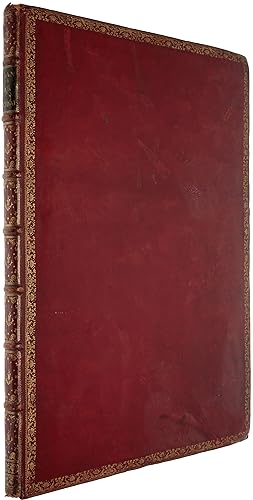
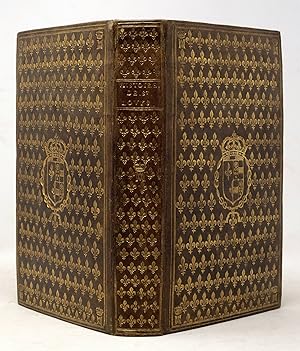

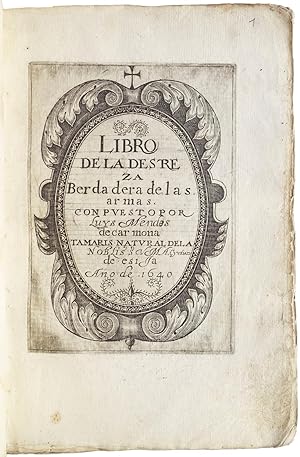
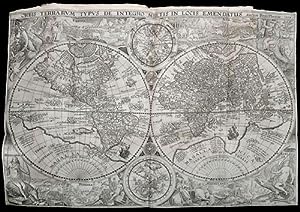
![Image du vendeur pour Historia de las Missiones que han hecho los religiosos de la CompañÃa de Jesus, para predicar el Santo Evangelio, en la India Oriental, y en los Reynos de la China y Japon. Primera parte en la qual se contienen sys libros, tres de la India Oriental, uno de la China, y dos de Japon. [Junto con]: Segunda parte en la qual se contienen siete libros con los quales se remata la Historia de los Reynos de Japon, hasta el año de mil y seyscientos. mis en vente par Librería José Porrúa Turanzas S.A.](https://pictures.abebooks.com/inventory/md/md31177927487.jpg)
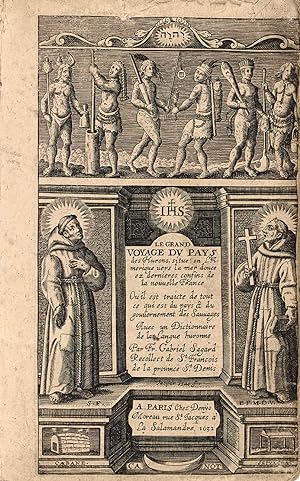
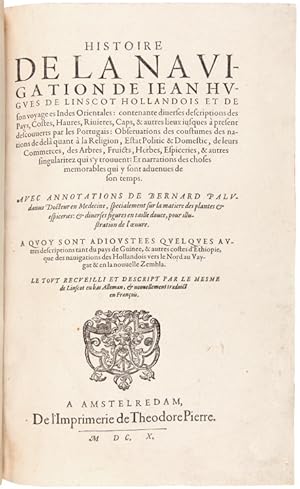
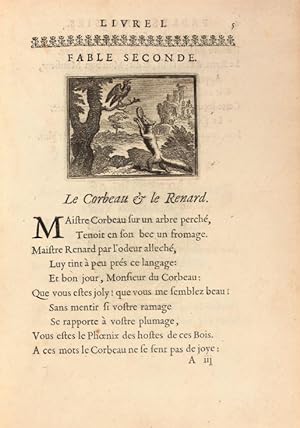
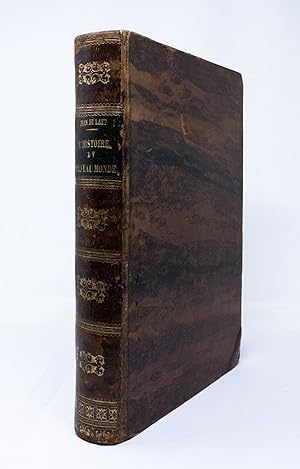
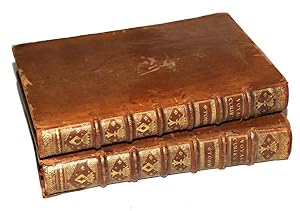
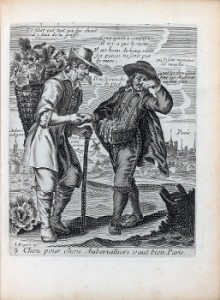
![Image du vendeur pour Relacion Universal legitima, y verdadera del sitio en que esta fundada la muy noble, insigne, y muy leal Ciudad de Mexico, cabeça de las Provincias de toda la Nueva Espana. Lagunas, Rios, y Montes que la cinen y rodean. Calçadas que las dibiden. Y Azequias que la atraviesan. Ynundaciones que à padecido desde su Gentilidad. Remedios aplicados. Desagues propuestos, y emprendidos. Origen y fabrica del de Gueguetoca, y estado en que oy se halla. Ymposiciones, derramas, y gastos que se an hecho. Forma con que se a auctuado desde el ano de 1553 hasta el presente de 1637. [Avec la suite]. mis en vente par Librairie Camille Sourget](https://pictures.abebooks.com/inventory/md/md30449357915.jpg)
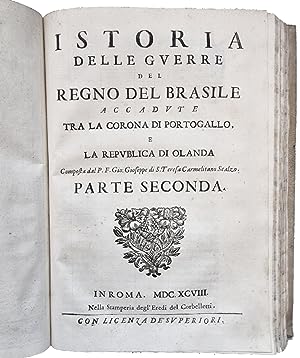
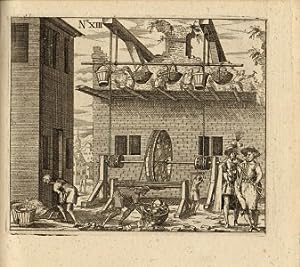
![Image du vendeur pour I. Geographiae libri octo, recognitiam diligenter. [II. Galliae Tabule Geographicae. Belgii Inferiores Geographicae Tabule]. mis en vente par JF LETENNEUR LIVRES RARES](https://pictures.abebooks.com/inventory/md/md22846645099.jpg)
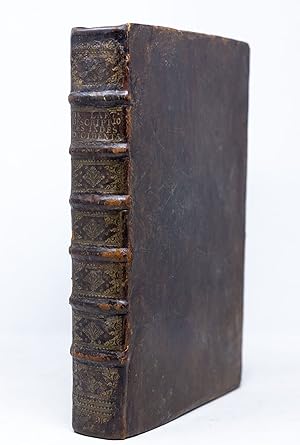
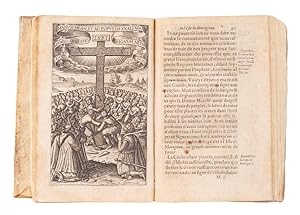
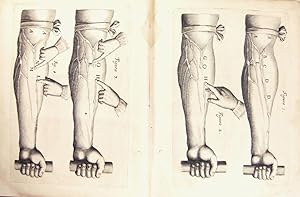
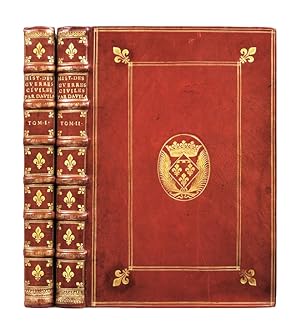
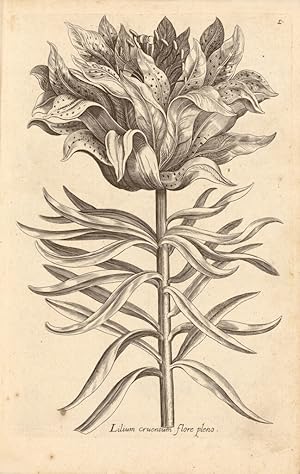
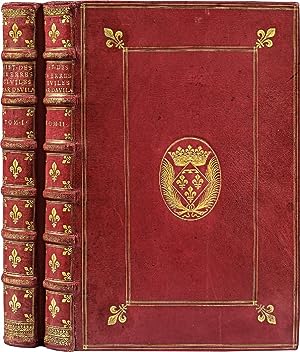
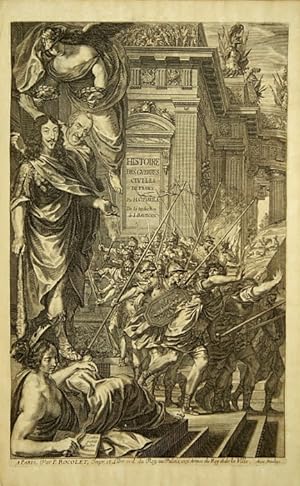

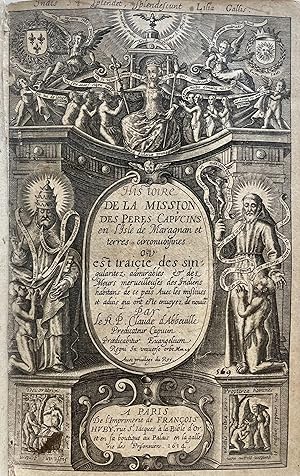
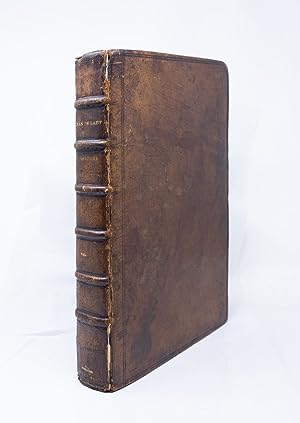
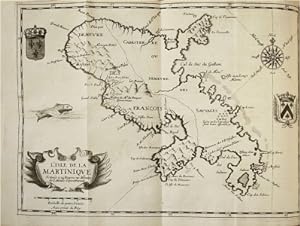
![Image du vendeur pour [TWO SIGNIFICANT DUTCH VOYAGES TO THE FAR EAST IN EARLY FRENCH TRANSLATIONS, BOUND TOGETHER AS ISSUED] mis en vente par William Reese Company - Americana](https://pictures.abebooks.com/inventory/md/md30103205572.jpg)